The Panasonic W85B is a television that aims to prove that the Japanese brand can make not only high-end equipment but also something more "for the people." And indeed — on paper, it looks quite decent: a VA panel with solid contrast, high refresh rates of 120/144 Hz, two full HDMI 2.1 ports, and low input lag. It sounds like a great set for a gamer or someone who just wants an affordable TV with good fundamentals. However, the reality is a bit more complicated. The W85B performs well mainly with the SDR format, especially after calibration, and is suitable for typical daily use. But when we start demanding more from it — for example, expecting strong HDR effects or greater immersion in games with that mode turned on — the TV quickly reveals its limitations. Its brightness is low and the lack of local dimming really stands out during evening viewing. Therefore, we see the W85B more as a "daily" television — ideal for someone who watches terrestrial television, YouTube, or streaming in SDR, and wants to connect a console or PC at 120/144 Hz (but without HDR). In this role, it performs very well. Is it a television for everyone? Definitely not. But if we accept its limitations and approach it without high expectations, the W85B can provide a lot of enjoyment for relatively reasonable money.
- Matching (Score)
- Our verdict
- TV appearance
- Where to buy
- Contrast and black detail
- HDR effect quality
- Factory color reproduction
- Color reproduction after calibration
- Smoothness of tonal transitions
- Image scaling and smoothness of tonal transitions
- Blur and motion smoothness
- Console compatibility and gaming features
- Input lag
- Compatibility with PC
- Viewing angles
- Daytime performance
- Panel details
- TV features
- Apps
- Playing files from USB
- Sound
Panasonic W85 vs Hisense E7Q / E79Q
Direct comparison
E7Q / E79Q
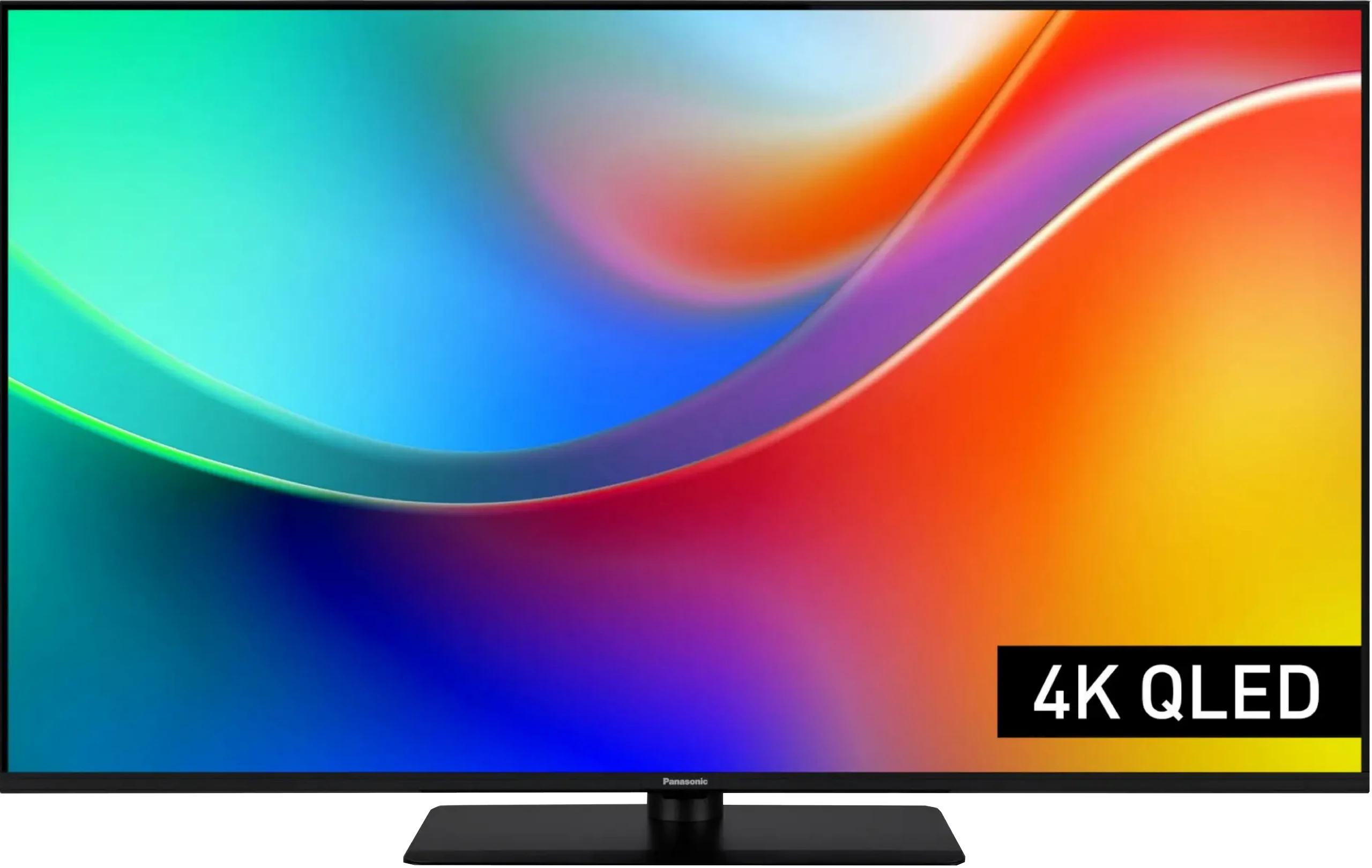
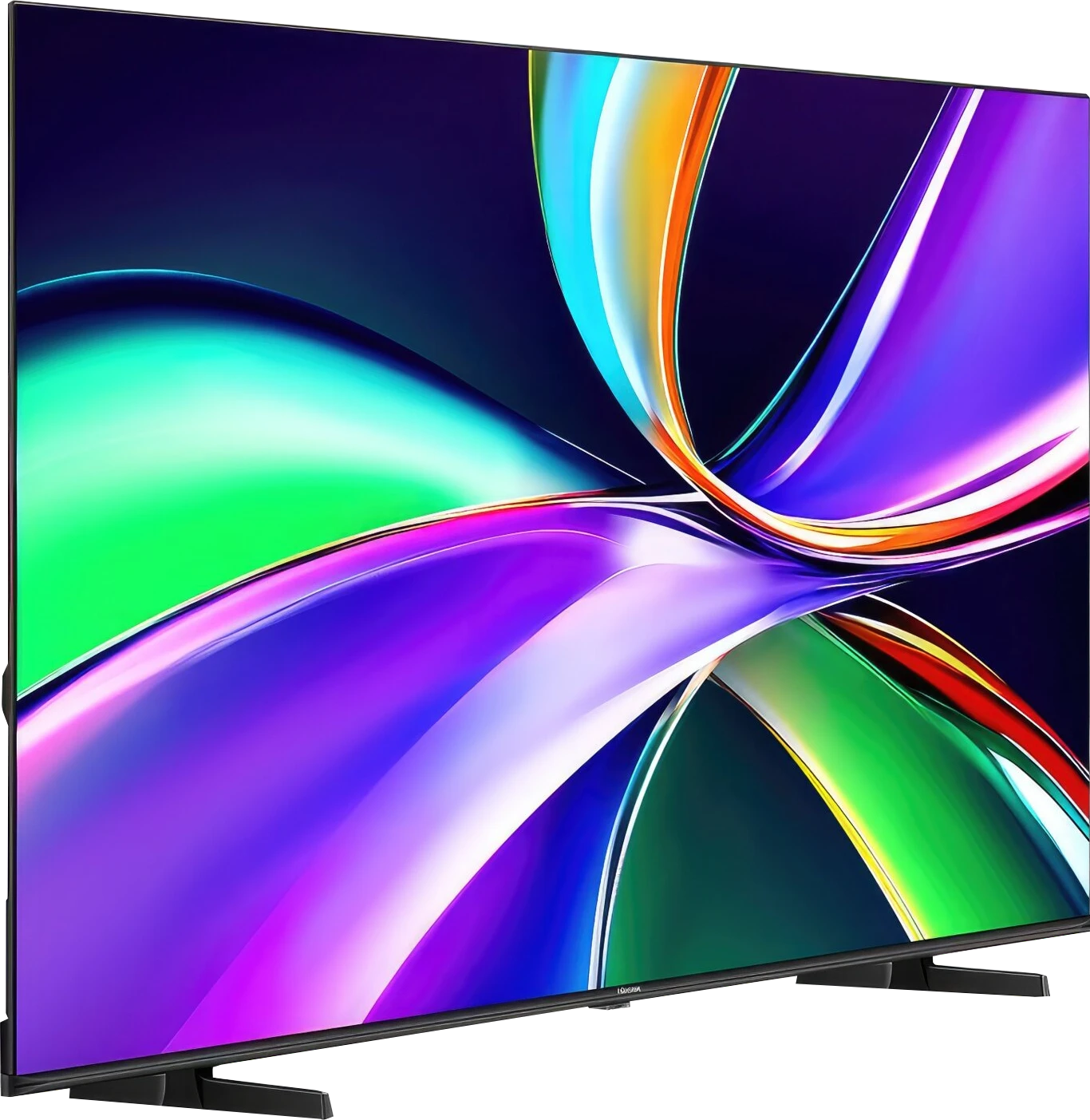
Panel type: LCD VA
Resolution: 3840x2160
System: Amazon FireTV
Model year: 2025
Complete the survey to find out the result

Panel type: LCD VA
Resolution: 3840x2160
System: VIDAA
Model year: 2025
Complete the survey to find out the result

Overall rating
6.1
6.1
Movies and series in UHD quality
5.5
6.2
Classic TV, YouTube
5.8
5.9
Sports broadcasts (TV and apps)
5.8
5.1
Gaming on console
7.7
7.1
TV as a computer monitor
8.6
3.0
Watching in bright light
4.2
5.2
Utility functions
6.8
8.7
Apps
7.6
7.7
Sound quality
5.8
6.3
Complete the survey to find out what fits your preferences
Advantages
VA matrix with high native contrast
High refresh rate of 120/144 Hz
Two HDMI 2.1 ports with support for ALLM, VRR, and Dolby Vision in games
Very low input lag
Fairly good colour gamut coverage thanks to the QLED filter
Support for multiple HDR formats including Dolby Vision and HDR10+
Sturdy central stand
Great compatibility with PC – full chroma 4:4:4, clear fonts
Good black and contrast
QLED (PFS LED) – vibrant and saturated colours, coverage of the DCI-P3 palette around 92%
Many features for gamers: ALLM, VRR, Low input lag, Game Bar
120Hz support at 1080p!
VIDAA system – easy to use, with AirPlay, Screen Mirroring, and voice search
Recording to USB from built-in tuners
3.5 mm jack output and component inputs for older devices
Support for many audio formats including Dolby Atmos and DTS:X
Attractive price
Disadvantages
Low brightness (below 270 nits) – no real HDR
HDR mode in games is poorly developed, with incorrect HGiG implementation
Poor media file player
The FireTV system in Europe is poorly developed: there are micro stutters and awkward translations, and many applications are missing
Average sound quality, lacking depth
The motion smoother does not want to work
Dolby Vision adds little (which is a shame)
Poor digital image processing: lack of image enhancement features, average upscaling
Strong dithering when connecting to a PC (coloured fonts)
The build quality of our unit was very average
Our verdict
The Hisense E7Q / E79Q is a type of television that does not promise miracles – and maybe that’s why it can pleasantly surprise. It doesn’t try to pretend to be high-end equipment, it just does its job. If you are looking for a cheap screen for everything, that can handle Netflix, a console, and early morning YouTube with coffee, then this model makes a lot of sense. The VIDAA system has been maturing for several years, and it shows that the manufacturer is drawing conclusions. We have AirPlay, screen mirroring, voice search in Polish – everything works, maybe not at lightning speed, but smoothly enough not to be irritating. You won’t find thousands of apps like in Google TV, but the most important ones are at hand. It’s a system meant to be simple and practical, rather than overloaded with unnecessary gimmicks – and in that sense, it really holds up. There’s something interesting for gamers too. The E7Q / E79Q offers low input lag, an automatic low latency mode (ALLM), support for VRR up to 60 Hz, and even a 120 Hz mode in 1080p resolution. This is not a screen for hardcore e-sports enthusiasts, but if you simply enjoy firing up the console in the evening and playing a few rounds, this television will do its job without complaint. And how about the picture quality? We won’t deceive you – it’s not spectacular, but there are also no reasons to complain. A brightness level of around 350 nits won’t impress, however, the contrast thanks to the VA panel can really surprise positively. The black is quite deep, and the colours have a pleasant intensity, especially in SDR mode. It’s a bit of a shame that Dolby Vision adds little – because if it worked as it should, we would have a television that could confidently be recommended for HDR viewing as well. On the other hand, it’s hard to expect that in this price range. It’s simply a fair, well-priced screen that doesn’t try to be a star, but is capable of delivering solid picture quality and surprisingly good features. And although it’s not perfect, after a few days of use, it’s hard not to think: “Wow, this cheap Hisense really does deliver.”
TV appearance
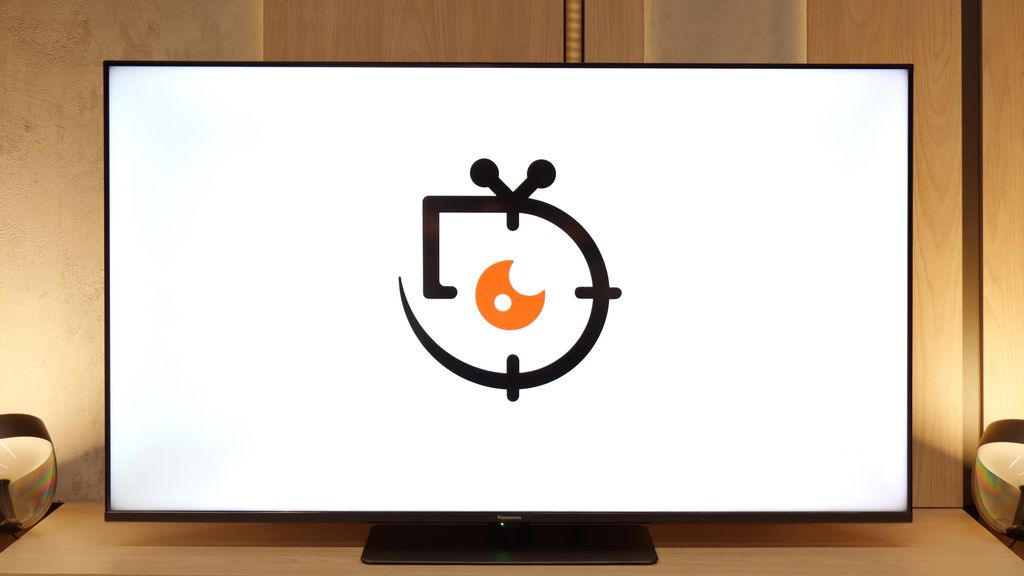
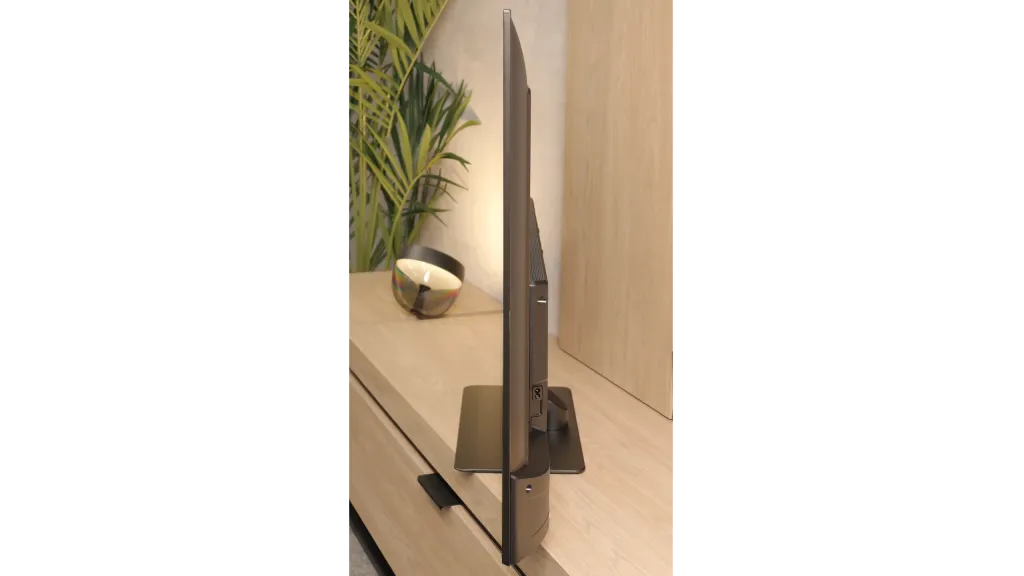
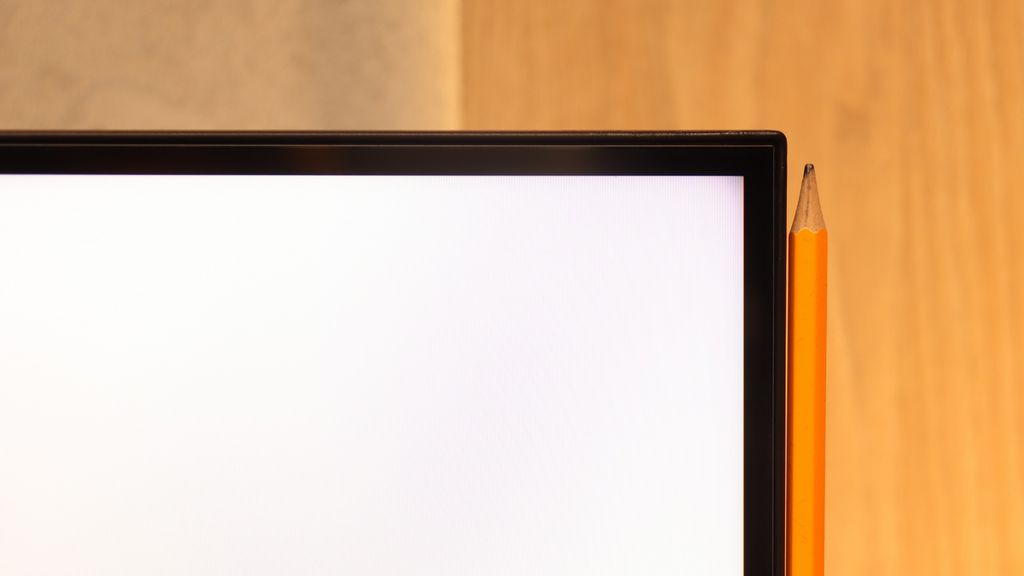
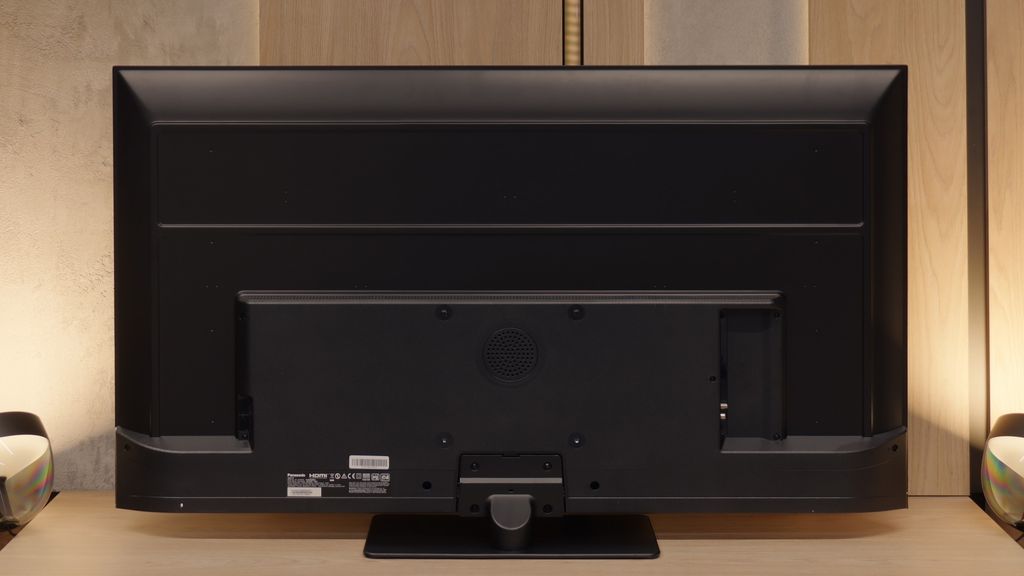
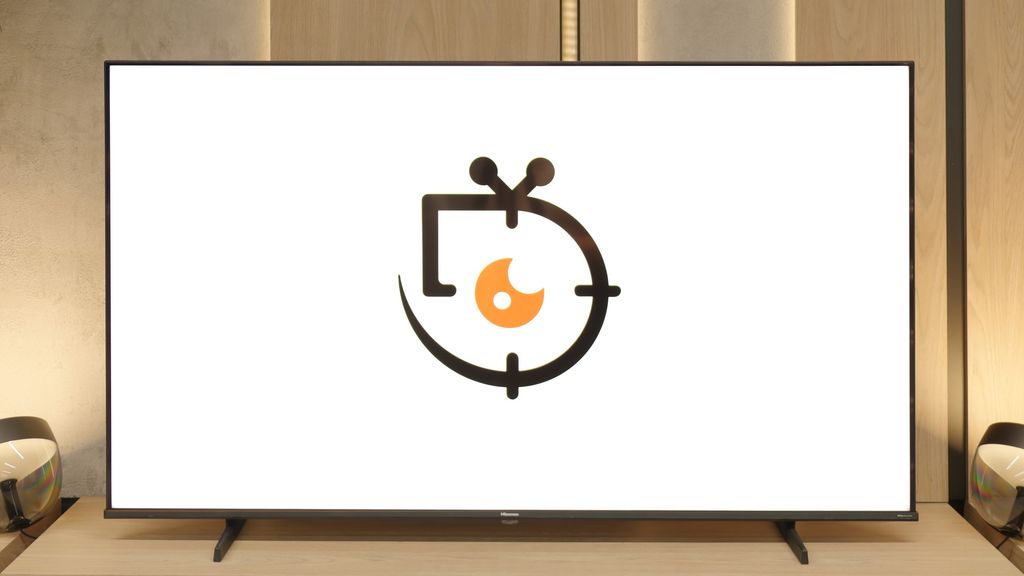
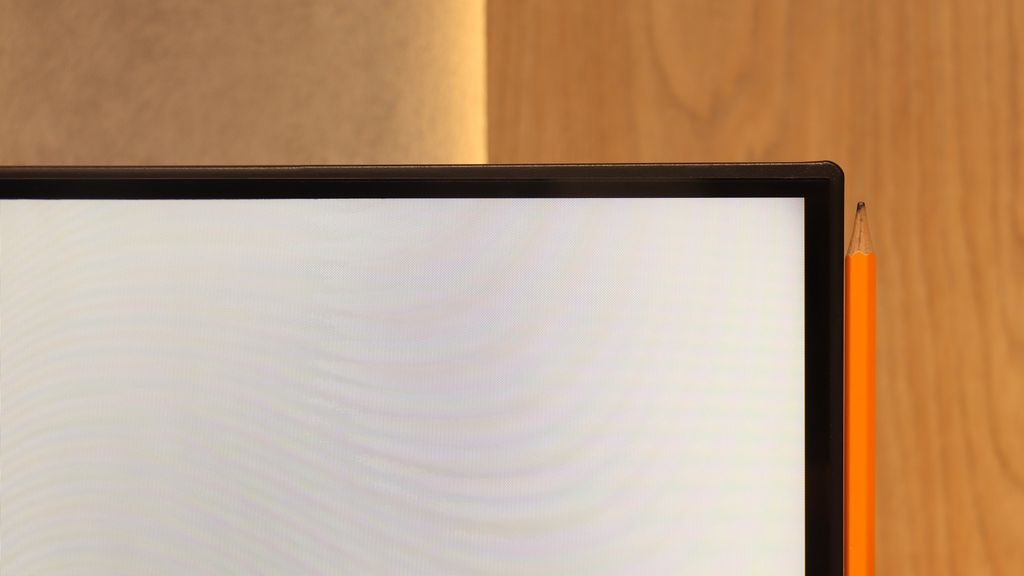
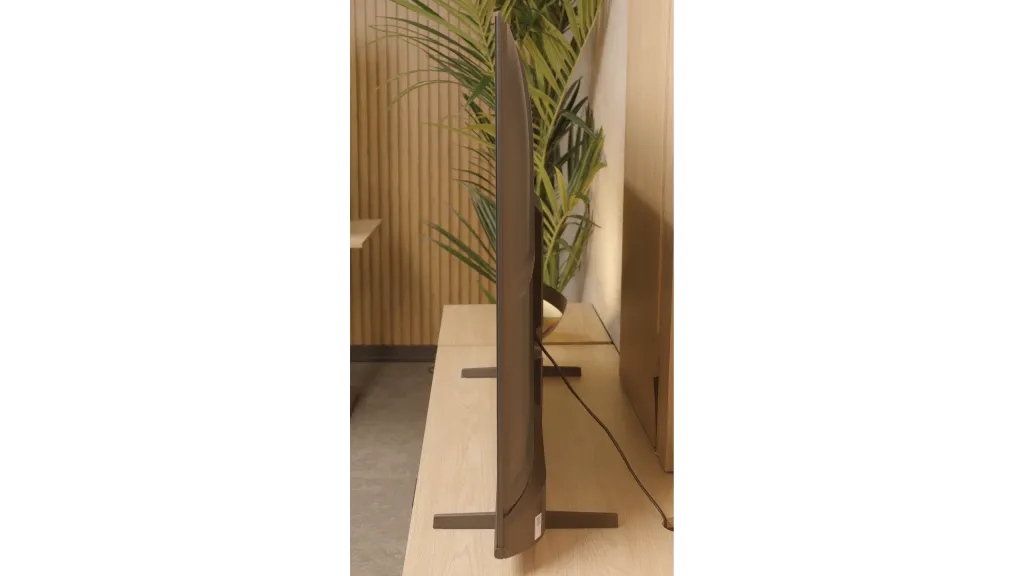
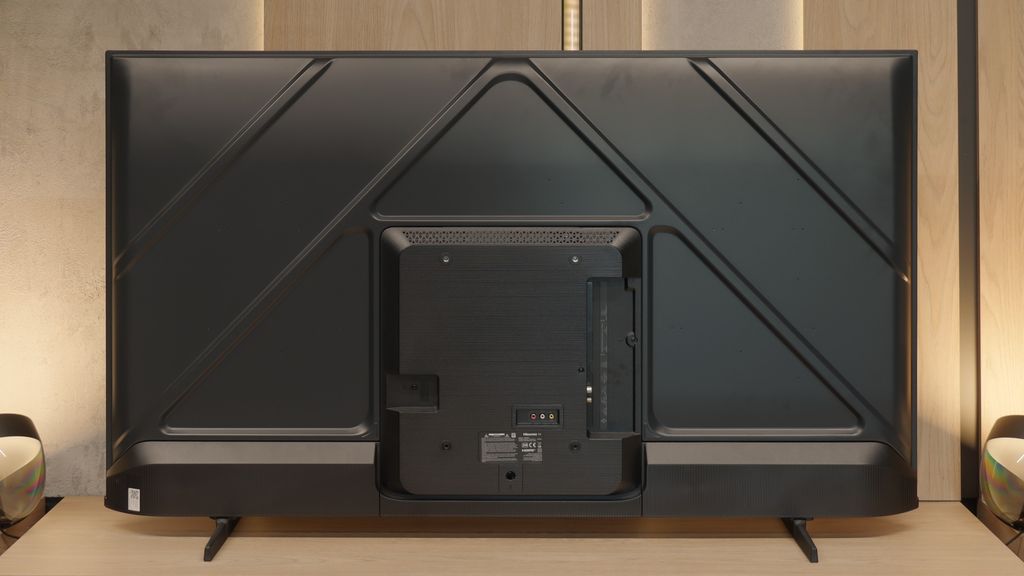
Contrast and black detail
5.3/10
5.7/10
Local dimming function: No
Local dimming function: No
Contrast:

Result
4,300:1

Result
4,250:1

Result
4,200:1

Result
4,400:1

Result
3,150:1

Result
5,400:1

Result
5,450:1

Result
3,800:1

Result
5,000:1

Result
4,350:1
Halo effect and black detail visibility:
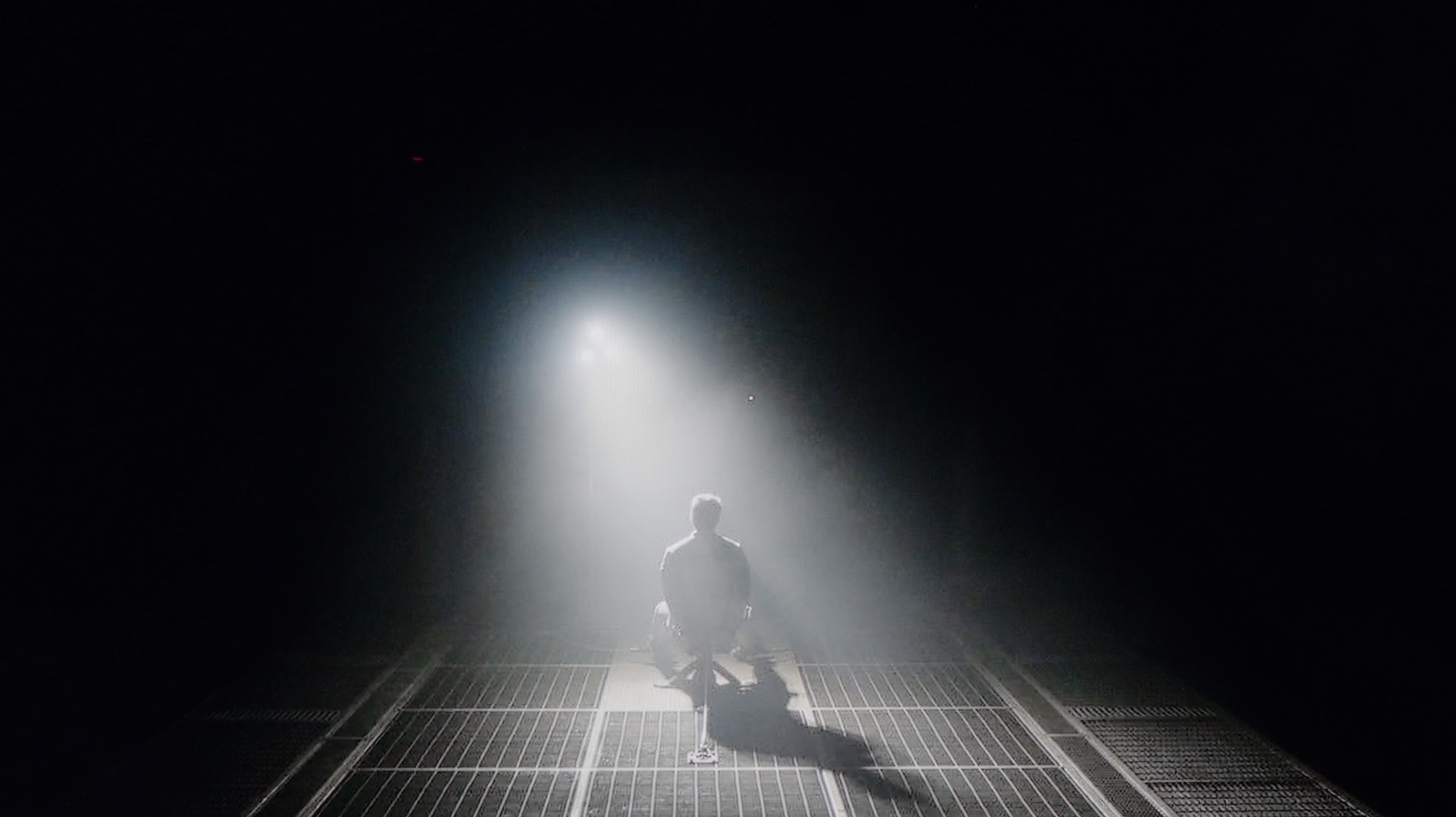
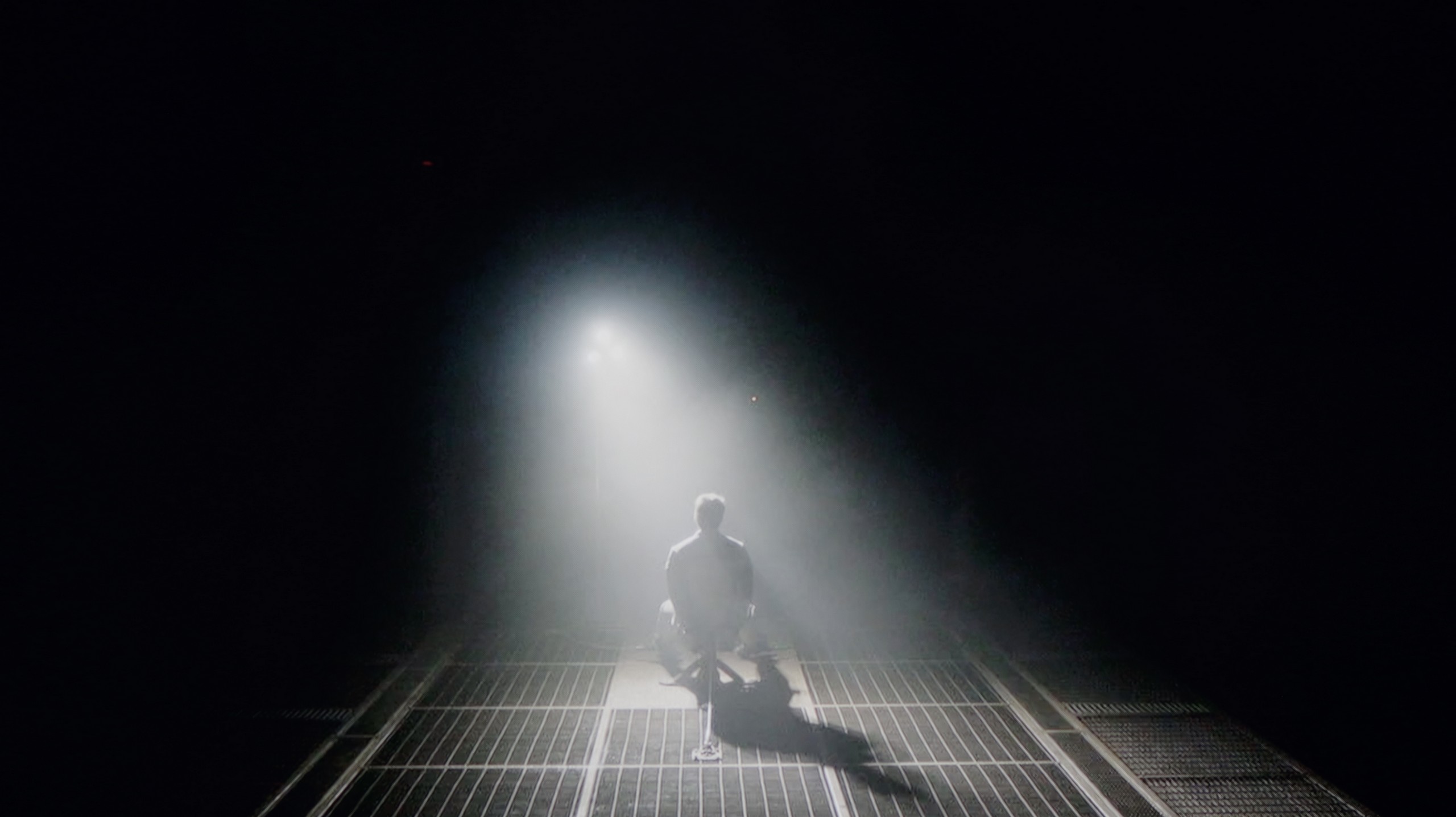
The W85B is Panasonic's basic LCD, so one shouldn't expect miracles in this category, but… the VA panel does a really good job here. Its biggest advantage is simply better contrast than in popular IPS panels – there, blacks often look like grey, whereas here you can actually see deeper tones. In the scenes we tested, the contrast held around 4000:1, which translates to roughly four times better performance than in IPS. Of course, there's no local dimming, so in challenging conditions, when it gets really dark in the room, black can resemble navy more than absolute pitch black. This is exactly the difference you notice when comparing it to OLEDs or Mini-LEDs. But for everyday viewing – series, matches, films in the evening in the living room – this contrast is more than sufficient. The picture has the appropriate depth, and the W85B does not give the impression of a "faded" television.
The Hisense E7Q / E79Q in our test variant of 58 inches is equipped with a VA-type panel, which has a huge impact on the perception of contrast and black levels in films and series. Thanks to such a panel, one can expect decent contrast and a stable visual effect, which works really well in most scenes. In our measurements, we achieved values approaching around 6000:1, which should be considered a solid result in this price range. However, it is important to remember that this is not a design with local dimming, so one cannot expect the deep, "pitch-black" blacks known from more expensive models. In some shots, the black can have a slightly navy hue, which is completely natural with this technology and price. This, however, is a compromise that does not detract from everyday viewing – especially if we watch in the evening with slightly dimmed light.
HDR effect quality
4.2/10
5.1/10
Luminance measurements in HDR:

Result
228 nit

Result
249 nit

Result
283 nit

Result
282 nit

Result
297 nit

Result
300 nit

Result
329 nit

Result
379 nit

Result
389 nit

Result
397 nit
Scene from the movie “Pan” (about 2800 nits)


Scene from the movie “Billy Lynn” (about 1100 nits)


Static HDR10


Dynamic: Dolby Vision
Dynamic: Dolby Vision


HDR luminance chart:
Hisense E7Q / E79Q
HDR luminance
Panasonic W85
HDR luminance
Unfortunately, we do not have good news here. The Panasonic W85B is rather dim – its peak brightness does not exceed 300 nits, so it’s hard to talk about any true HDR effect. In practice, this means that scenes which can “shine” and make an impression on other screens simply look like ordinary SDR with a slight boost in colours here. Our measurements and film tests confirmed this – regardless of the content, the W85B will not extract anything more from HDR. Therefore, if someone is looking for a television specifically for HDR, it is better to look towards other models. As consolation, the fact remains that in terms of colours, the W85B performs quite well. It is a QLED television, so its colour gamut coverage is wide, and most films and series look natural, without a distinct “washed-out” effect. The colours are saturated, so in everyday viewing, there is no sense that something is strongly amiss.
The Hisense E7Q / E79Q is a television with average brightness, with a peak luminance level of around 350-380 nits. This is an absolute minimum that allows for HDR content to be viewed in a way that is close to the creators' intentions, although without a distinct "wow" effect. Synthetic test results on white screens have been confirmed in practice – in film scenes, the bright parts of the image are stable and quite uniform, but it's hard to speak of a true "light punch." In everyday use, for example, when watching Netflix or YouTube, the HDR effect is acceptable and is perfectly sufficient for most users. However, it must be stated clearly – this is not the level of top-end screens, and one should not expect that in this price range. Fortunately, the Hisense E7Q / E79Q has an advantage that allows it to gain quite a few points: it features a PFS LED QLED panel, utilising an additional phosphor layer that improves colour reproduction. The measured range of the DCI-P3 colour gamut is about 92%, which means that colours in most scenes are vibrant, well-saturated, and pleasant to the eye, particularly for this price bracket.
Factory color reproduction
4.2/10
5.2/10


Factory Mode
After calibration
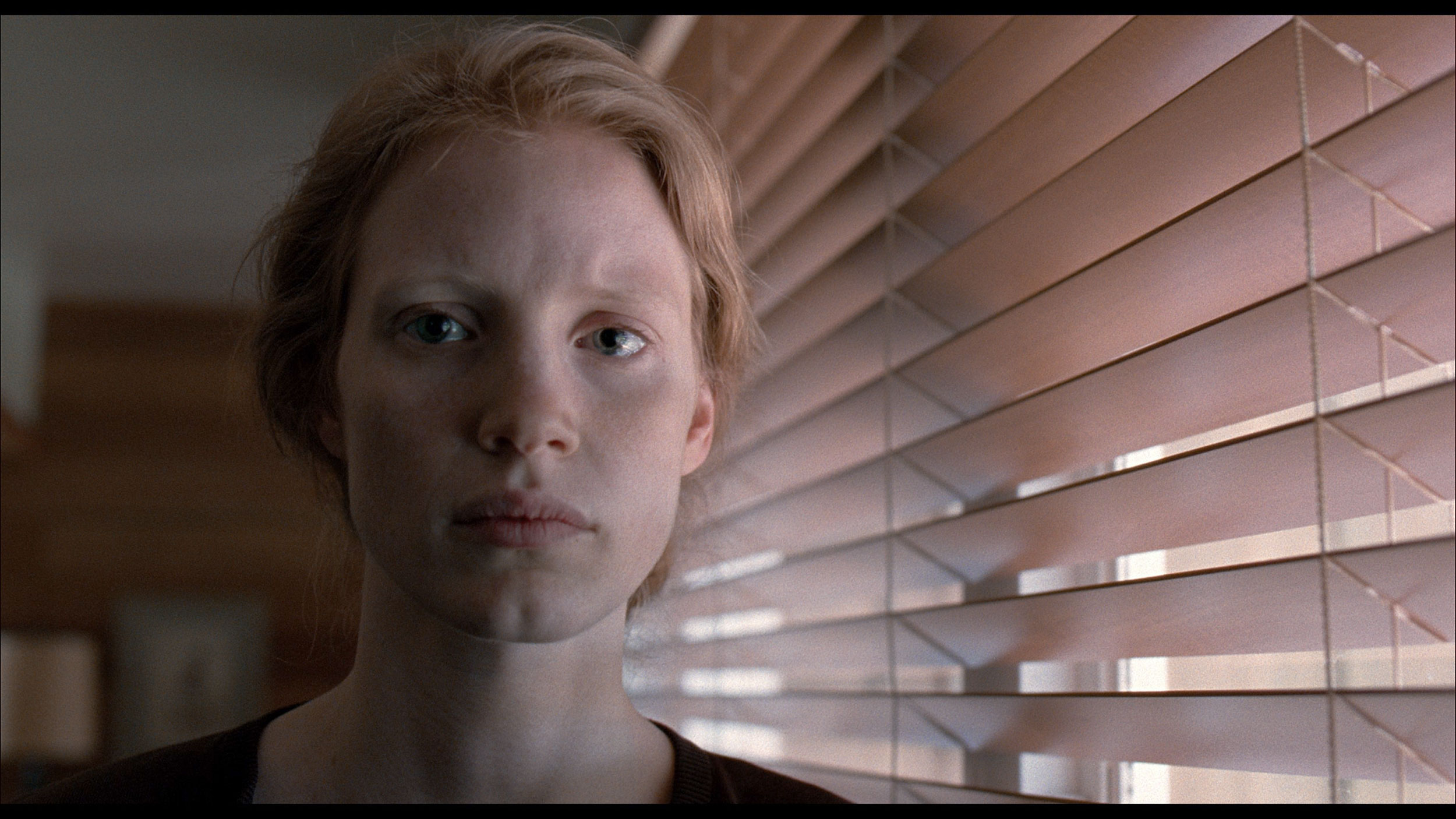
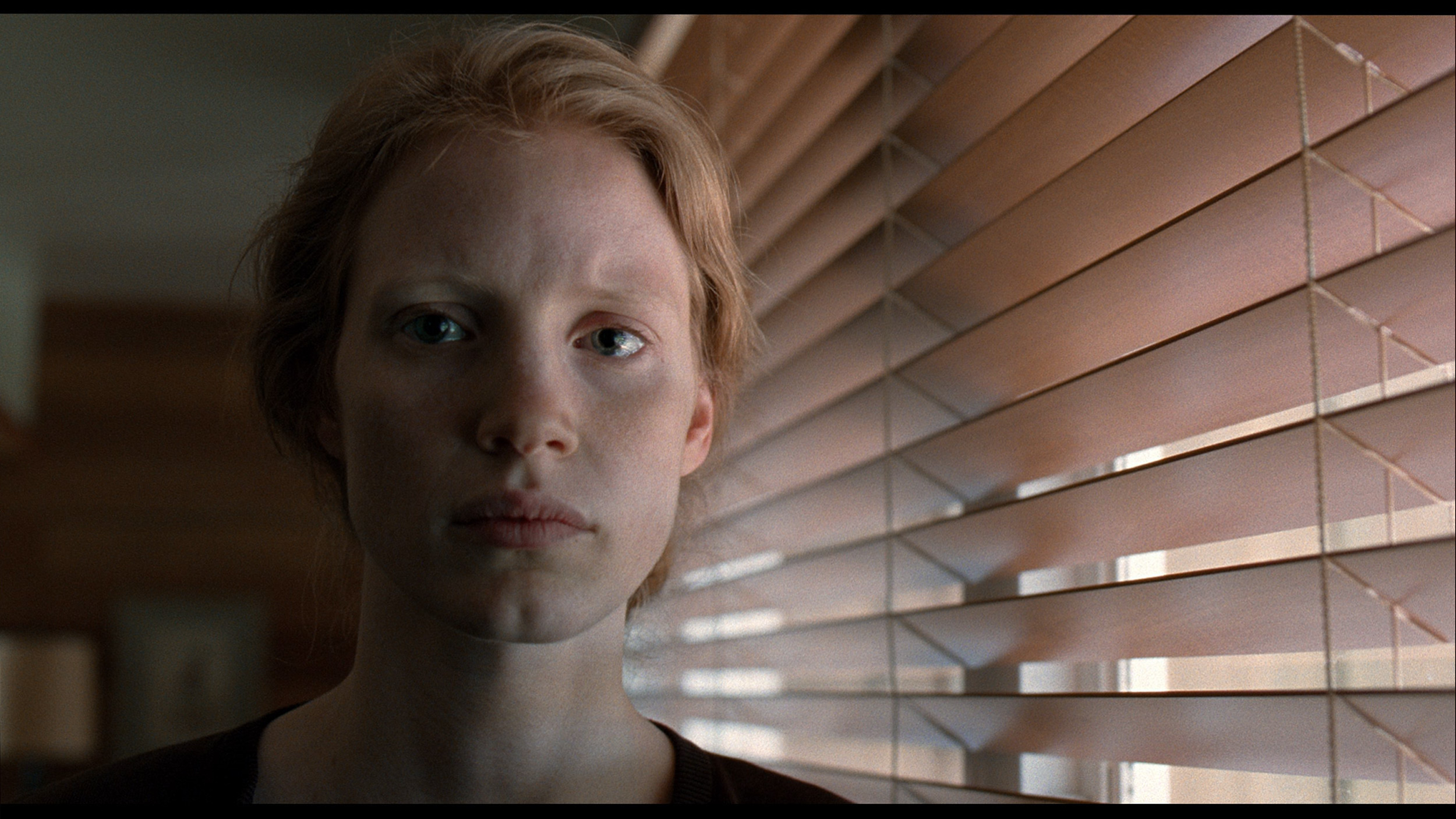
Factory Mode
After calibration
When testing the Panasonic W85B, we obviously started with Filmmaker mode, as this is today’s gold standard when it comes to watching content “as the director intended.” The problem is that this television is quite far from those intentions. The biggest issue turned out to be an excess of red – both in SDR and HDR. The image often appeared too warm because of this, and in some scenes, it was almost “blazing.” Additionally, there is the issue of brightness management. When we looked at the gamma or EOTF charts, it was clear as day that in most scenes, the television brightens the image more than it should. The effect was simply predictable. Details can get lost, there is flattening, and highlights are blown out across the entire screen. We know, of course, how to correct this, but it must be said honestly that it requires a lot of work during calibration. Out of the box, the W85B does not provide a picture close to reference – it is rather a television that will always interpret colours and brightness a little “in its own way” without professional adjustments. Unfortunately, this is to the viewer’s detriment.
In Filmmaker mode, the Hisense E7Q / E79Q television was truly impressive. After the first measurements, it became clear that the white balance was quite well tuned, with the only minor deviation being a slight tendency towards a purple tone, which we mentioned earlier. However, this did not significantly impact the overall character of the image – it remained coherent and pleasant to view. A much larger issue turned out to be the brightness characteristics (gamma) in SDR content and the EOTF curve in HDR films. The television noticeably brightened the image, flattening the contrast and diminishing its depth. Gamma values could drop from the reference 2.4 to around 1.9, making the image look as if it were covered with a thin, milky layer. Fortunately, this is a problem that can be relatively easily corrected through calibration.
Color reproduction after calibration
6.9/10
7.4/10




Fortunately, calibration made a significant difference for the Panasonic W85B, particularly in SDR content. Here, the improvement was really noticeable – we managed to balance the whites and somewhat tame the tendency of the television to excessively brighten the entire image. The picture became more coherent, and the colours gained a naturalness that was lacking in the factory settings. Admittedly, the results from the Color Checker are not perfect, as the W85B has visible issues with green saturation, but overall, we evaluate the post-calibration effect in SDR very positively. The situation is a bit different with HDR. Here too, we managed to reduce the tendency to warm up the entire scene, so the image performed significantly better than in the factory settings. However, the same issue we mentioned earlier is still evident – the television interprets the image too much "on its own" and brightens the entire screen. The lack of local dimming only exacerbates this effect. In summary, briefly in SDR content, the W85B performs really well after calibration and is more than suitable for daily viewing. However, in HDR, even after adjustments, it remains difficult to unequivocally recommend it for serious viewing sessions.
The biggest beneficiary of calibration in the case of the Hisense E7Q / E79Q was undoubtedly the SDR mode. It managed to achieve an almost perfect image – most errors in the Color Checker test dropped below a value of 3, and often even 2, which is an outstanding result for this class of equipment. The greatest improvement came from equalising the brightness characteristic (gamma), which meant the image no longer appeared washed out and regained its natural depth. In HDR content, it was also possible to improve colours and eliminate the purple tint mentioned earlier, but errors in the Color Checker measurements were still noticeable. This is due to the fact that – as is often the case with Hisense televisions – the screen manipulates brightness quite heavily, overemphasising some colours. This was also indicated by the EOTF curve, which was slightly above the reference values, suggesting these minor issues with excessive brightness. Despite this drawback and the design limitations that emerge with HDR content, the Hisense E7Q / E79Q gained quite a lot after calibration. In everyday use, the television presents a consistent, natural, and pleasant image, and the difference compared to the factory settings is enormous.
Smoothness of tonal transitions
9.1/10
8.5/10






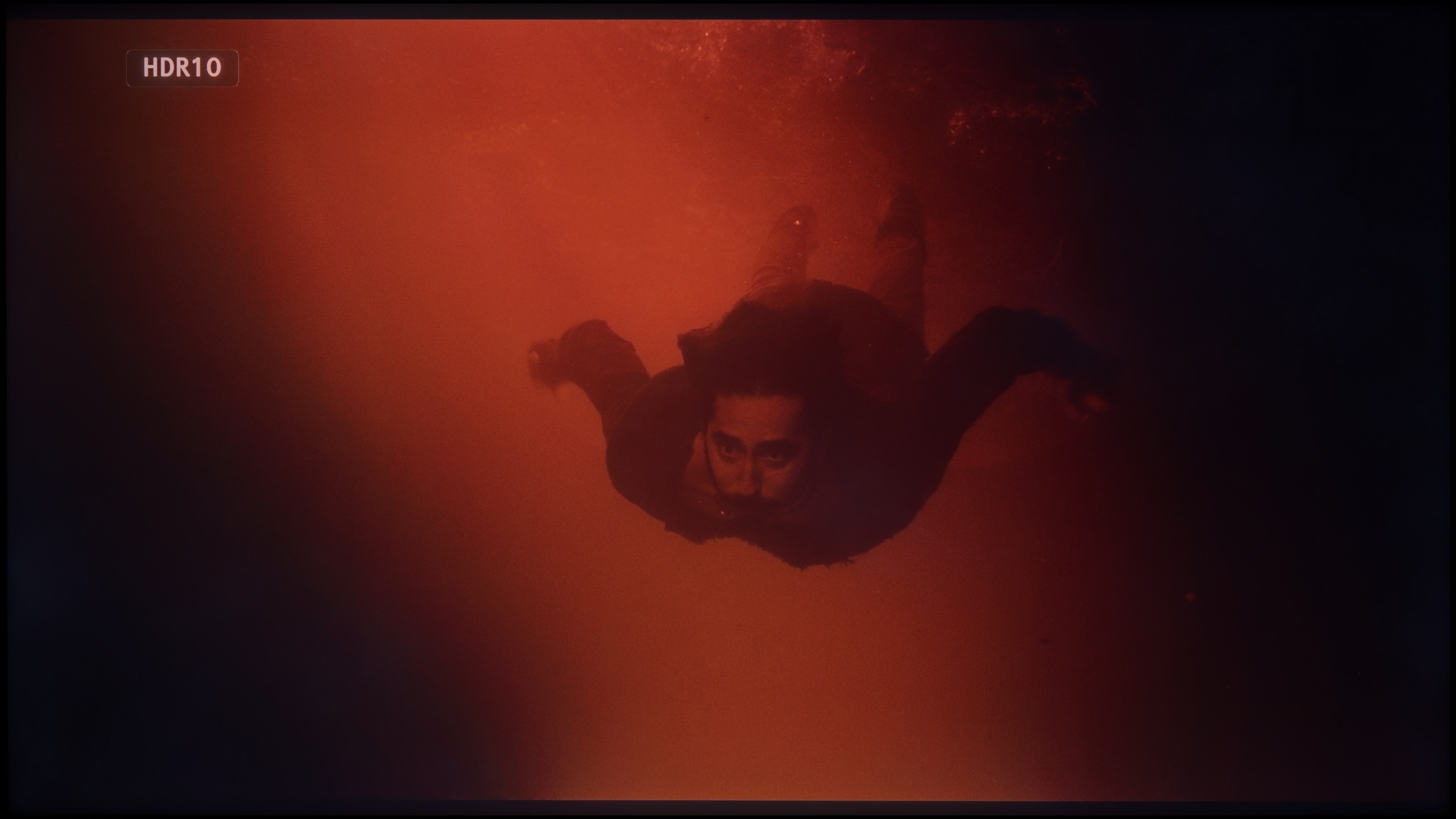





Here we can comfortably praise the Panasonic W85B. The television handles colour matching and tonal transitions remarkably well. Gradients appear smooth, without visible bands or artificial contours. As a result, the image gains a natural quality, and sequences with a large number of subtle shades – such as the sky or blurred backgrounds – look exceptionally good for this class of equipment.
For such a budget television, the Hisense E7Q / E79Q performs really well with such a challenging element as the fluidity of tonal transitions. In most scenes, the colours blend together naturally, without noticeable jumps or artificial edges. Brighter parts of the image stand out particularly well – the transitions are smooth and pleasing to the eye. Minor issues only occur with very dark shades of grey, where slight banding can be noticed. However, this is a detail that does not affect the overall reception of the image. For a television in this range, the result is more than decent.
Image scaling and smoothness of tonal transitions
6/10
5/10
Smooth transition function
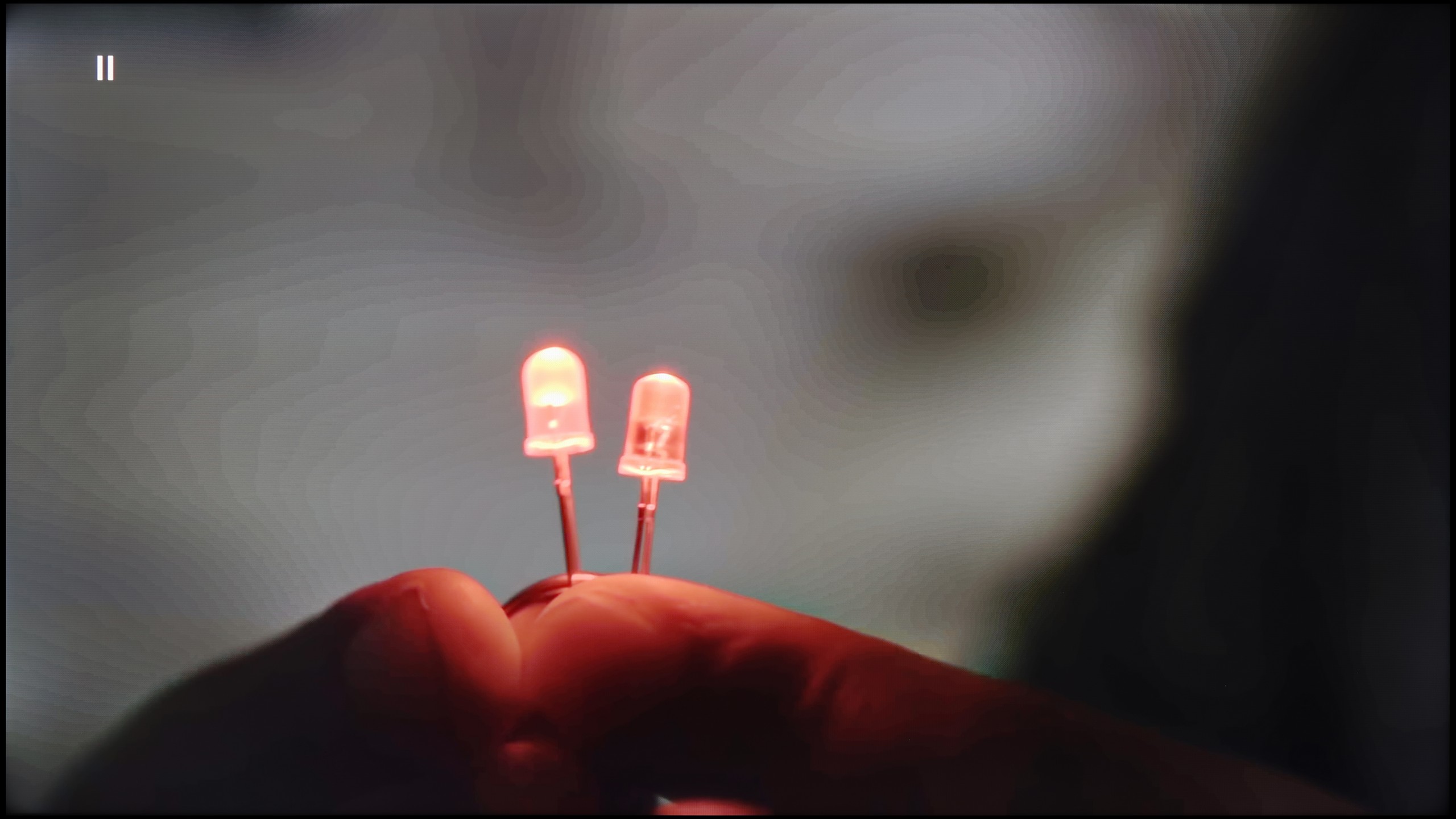
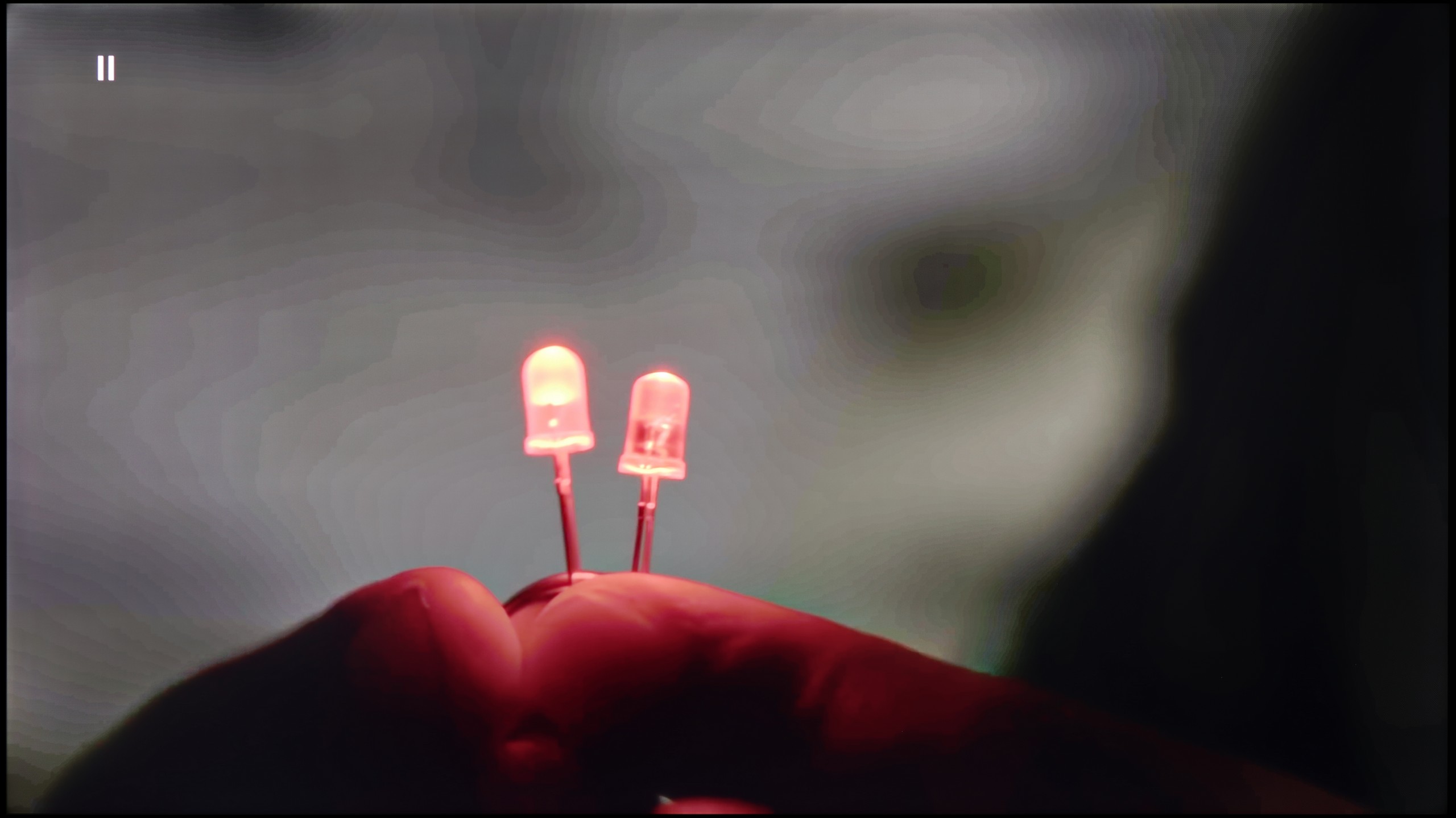
Image without overscan on the SD signal


With native SDR content, the Panasonic W85B performs very well – tonal transitions are smooth and natural, without artificial bands or prominent contours. However, the situation is worse when it comes to lower resolution materials. It is precisely there that the television has the most difficulty with "enhancing" the image. The lack of any option in the menu that would allow for improving gradation means that with older films or materials from YouTube, one can sometimes notice slight issues with colour blending.
Fortunately, upscaling, or raising the quality of lower resolution content, performs much better. This is definitely a strong point of this model – the image is scaled cleanly and in detail, and the television handles this better than one might expect from such an inexpensive piece of equipment. This is thanks to the HCX processor, which Panasonic has been developing for years, and it is noticeable that even in the lower series it can do a good job.
In the case of the Hisense E7Q / E79Q, upscaling and digital image processing are not the strongest aspects of this television. It is evident that the manufacturer has opted more for simplicity rather than advanced image processing algorithms. The television does not offer any features to smooth tonal transitions or systems to improve image clarity, resulting in lower resolution materials looking simply very raw. On the screen, you can notice subtle compression edges that better processors in other models can effectively hide.
During the HD material tests, we noticed that the E7Q tries to artificially enhance detail, which sometimes works, and at other times has the opposite effect – the image becomes soft, slightly blurred, at times even “watery.” There is no aggressive sharpening that ruins naturalness, but there is also no finesse in the detail integration that better image converters offer.
Blur and motion smoothness
6.5/10
4.8/10
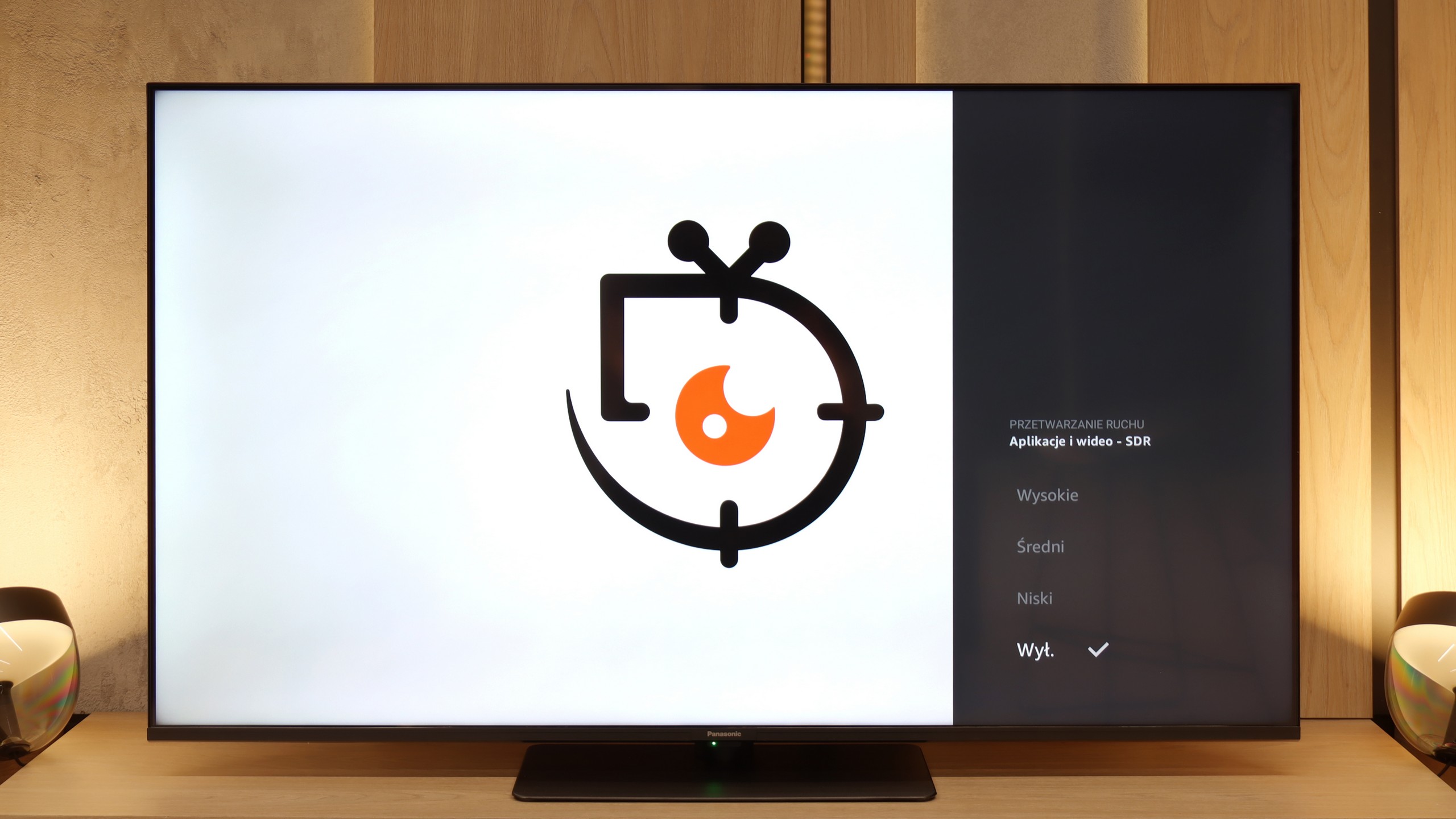
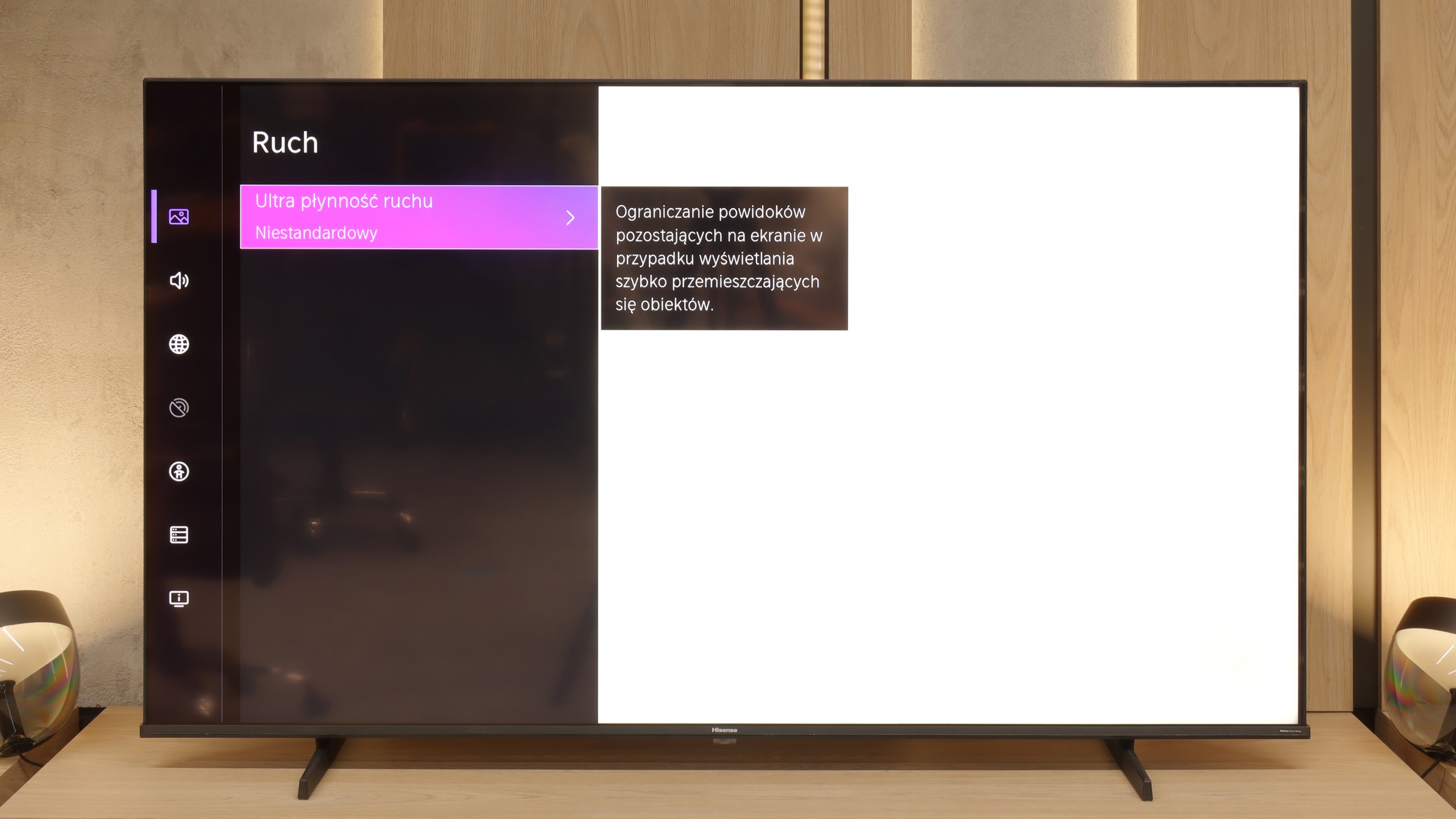
Blur (native resolution, maximum refresh rate):






Blur (4K@144Hz):


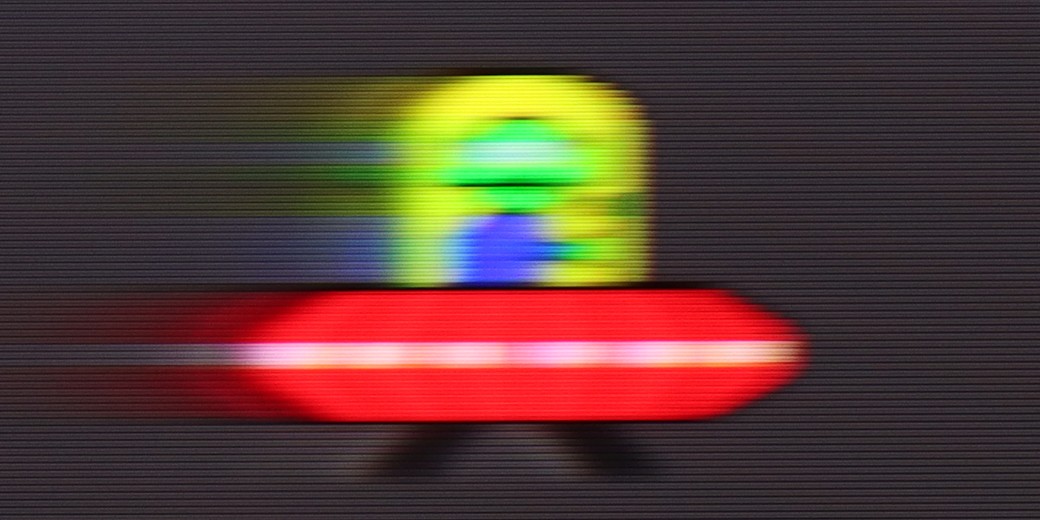
Blur (1080p@120Hz):


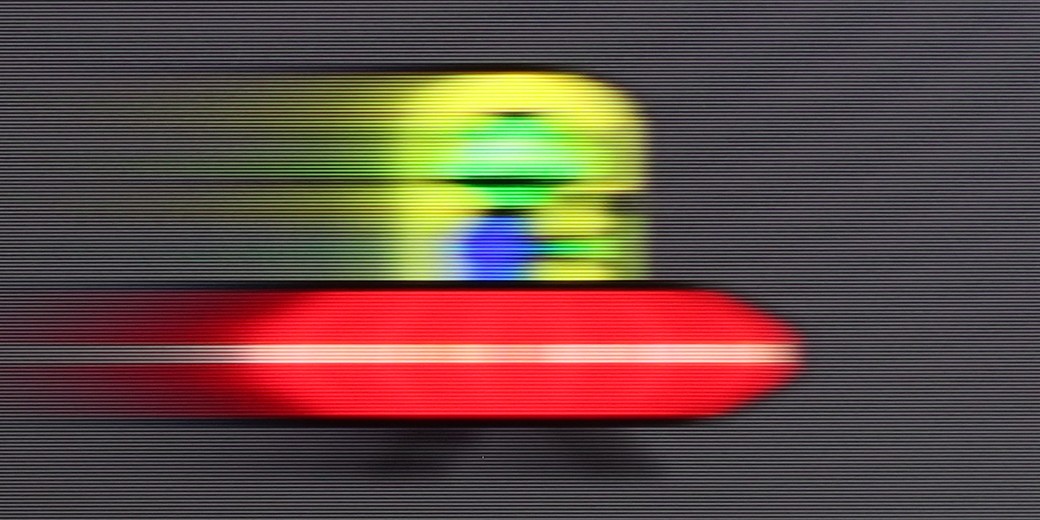
At first glance, everything looks good – the Panasonic W85B has a 120 Hz panel and even a 144 Hz mode, so it seems that it should cope well with smooth motion. The problem arises when we look into the settings. The options for improving fluidity are supposedly present in the menu, but in practice… they don't change anything. No matter what we choose, the image looks the same. On top of that, there is a lack of BFI, or the black frame insertion mode, which on many televisions helps sharpen motion. And suddenly it turns out that despite the strong panel, the W85B offers us no real tools to adjust motion according to our needs. It’s only good when the source itself operates at a higher frequency – for example, games at 120 Hz. But when it comes to films or sports, we simply have to accept what the television shows us, because nothing more can be done about it.
Hisense E7Q / E79Q is a television with a 60 Hz screen, so fans of 4K sports may feel a slight disappointment – we simply won’t see such smooth images here as in more expensive models with higher refresh rates. Fortunately, the situation is much better for films. Cinematic materials recorded at 24 frames per second can be displayed here using a motion smoothing feature, allowing the user to tailor the picture to their own preferences – either more cinematic with visible frames or smoother, in a theatrical style.
Console compatibility and gaming features
8.5/10
6.3/10
- ALLM
- VRR
- VRR range48 - 144Hz48 - 60Hz
- Dolby Vision Game Mode
- Correct implementation of HGIG
- 1080p@120Hz
- 1440p@120Hz
- 4K@120Hz
- Game bar
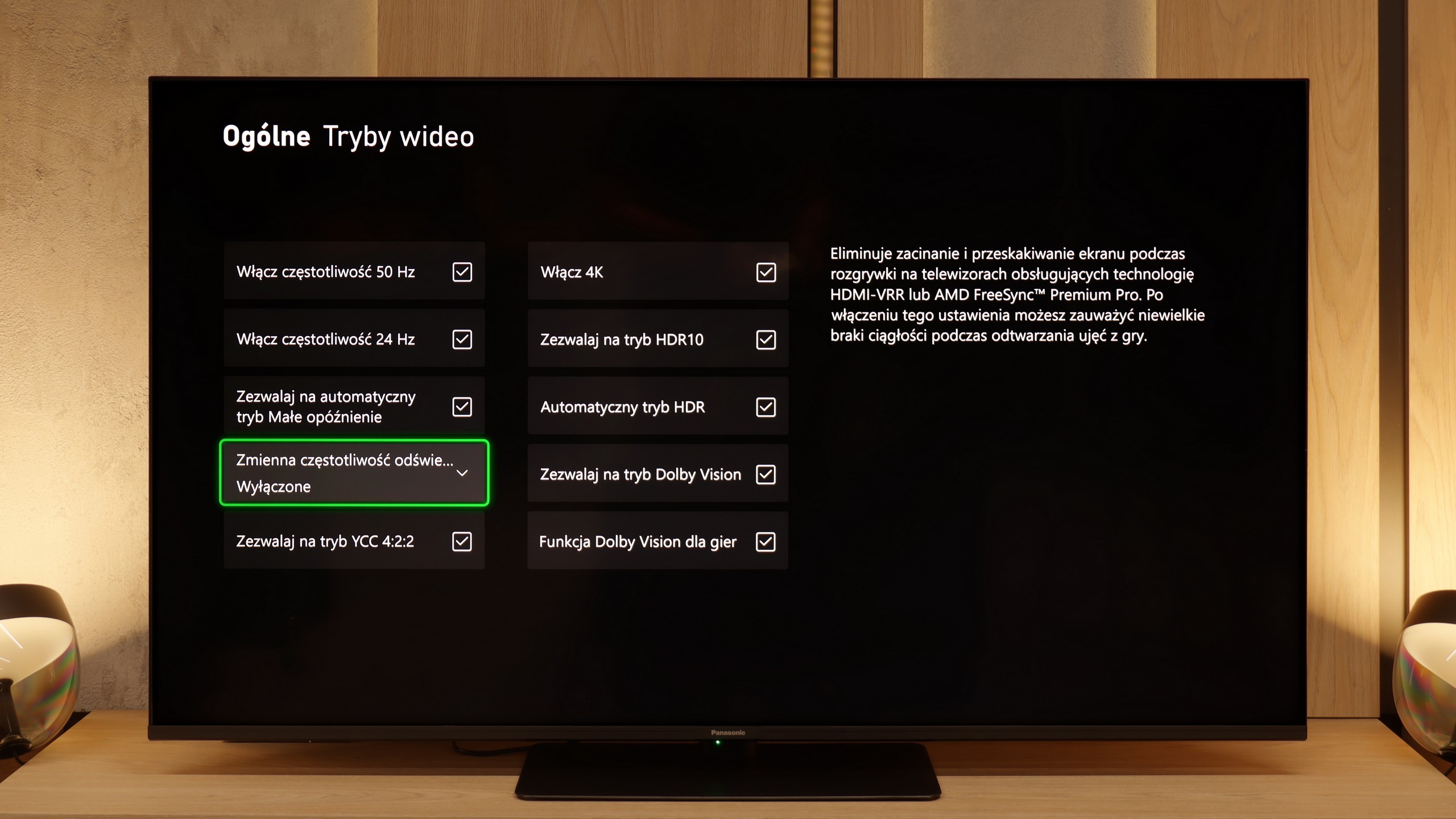
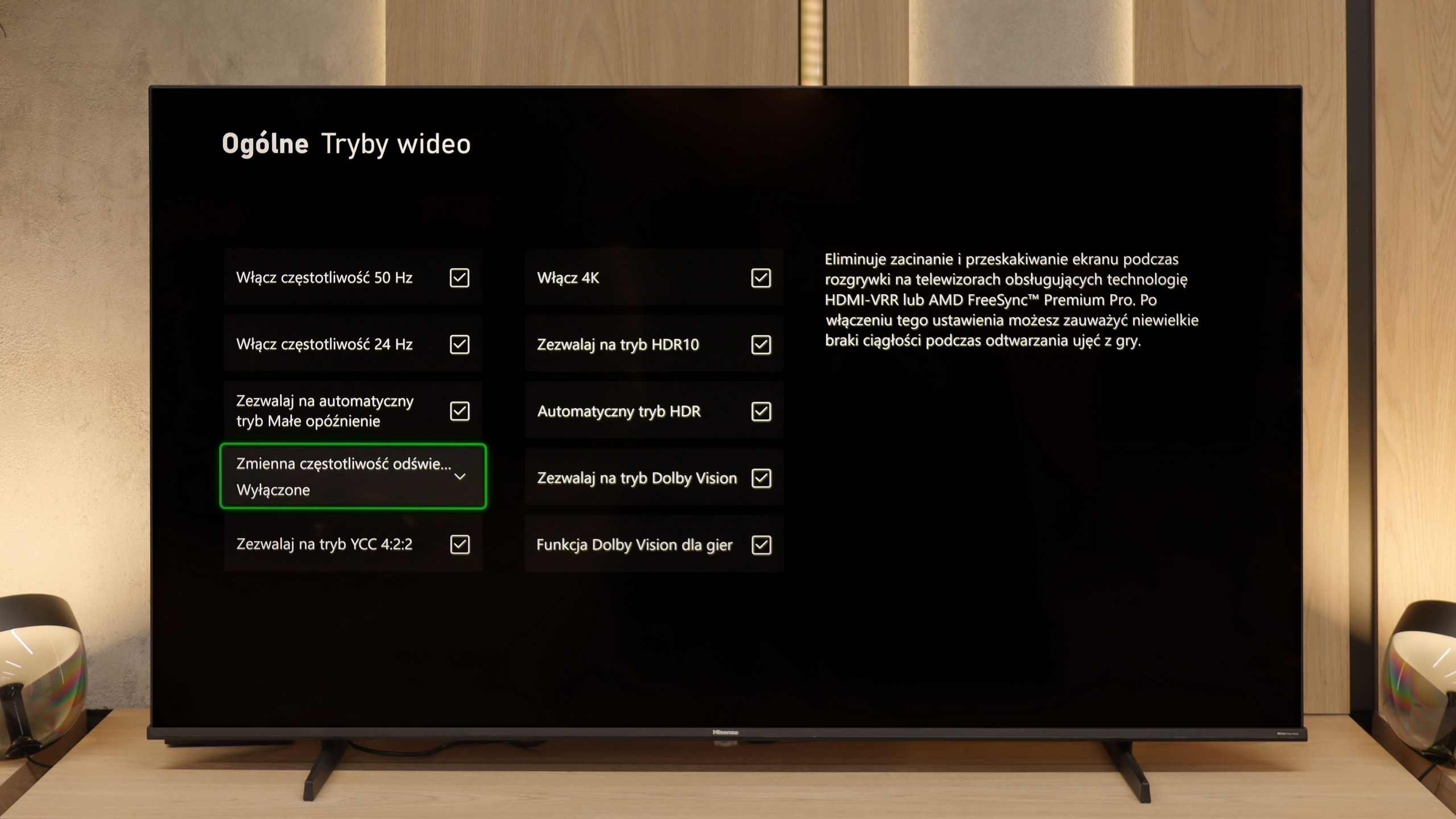
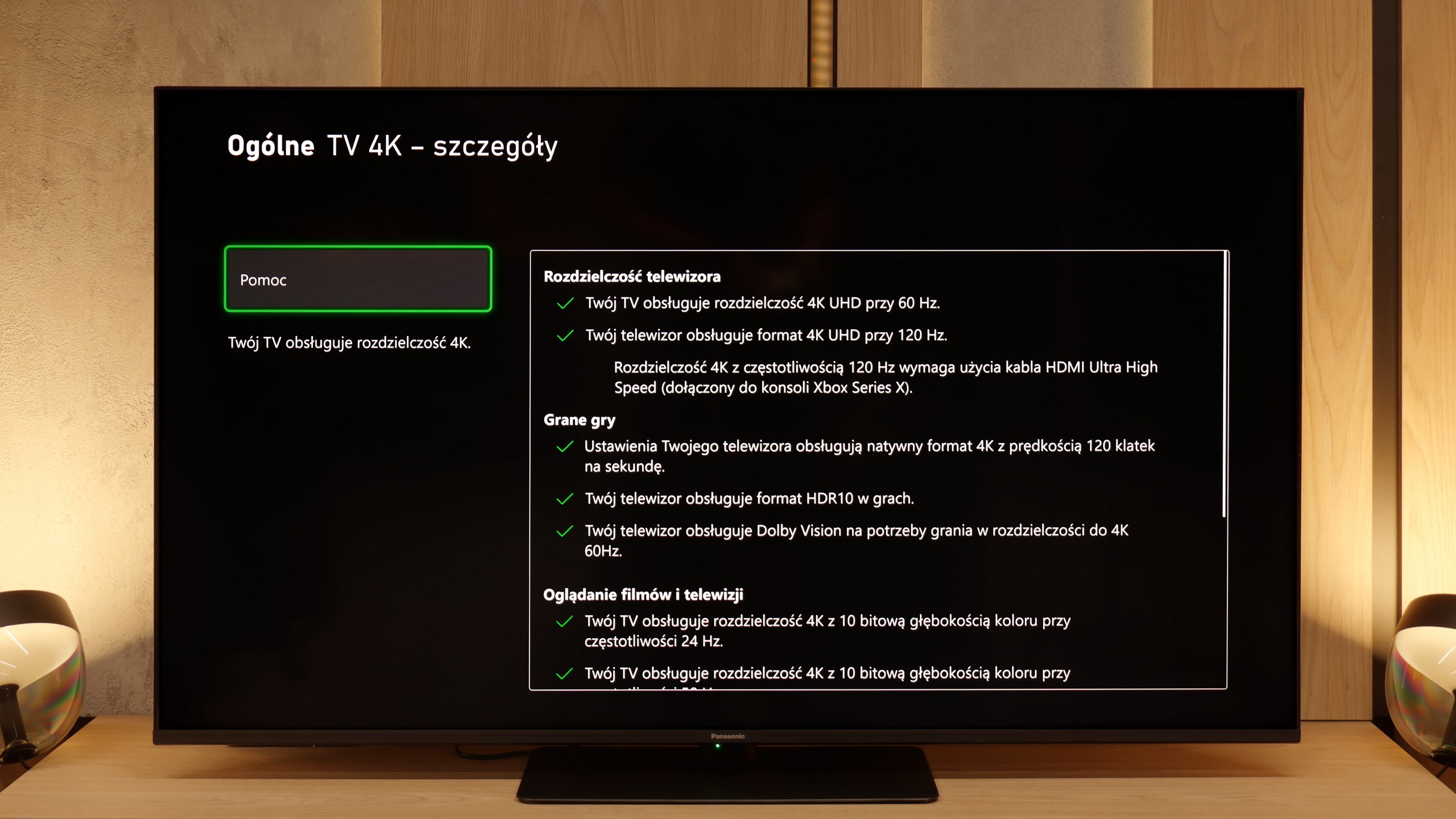
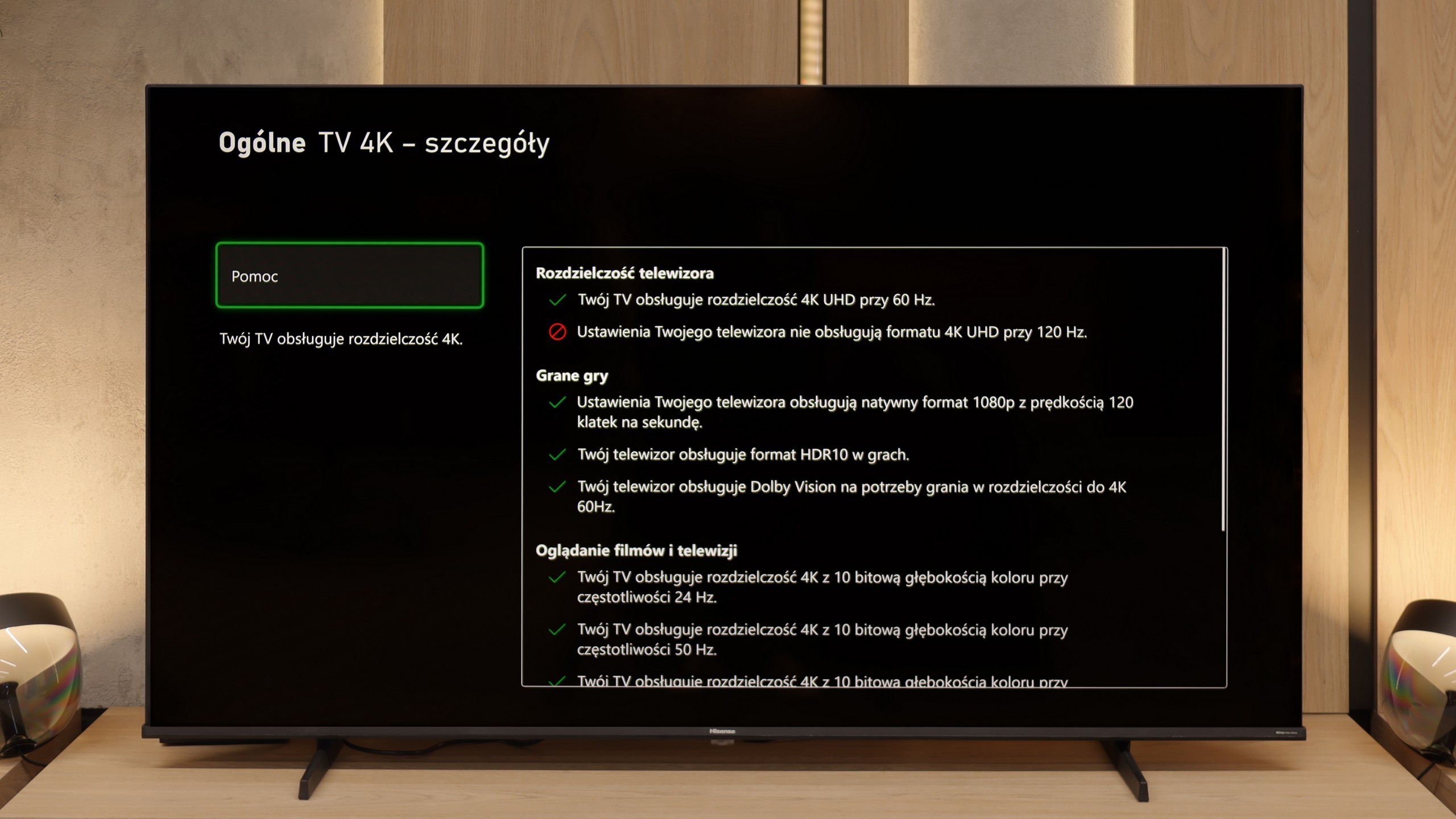
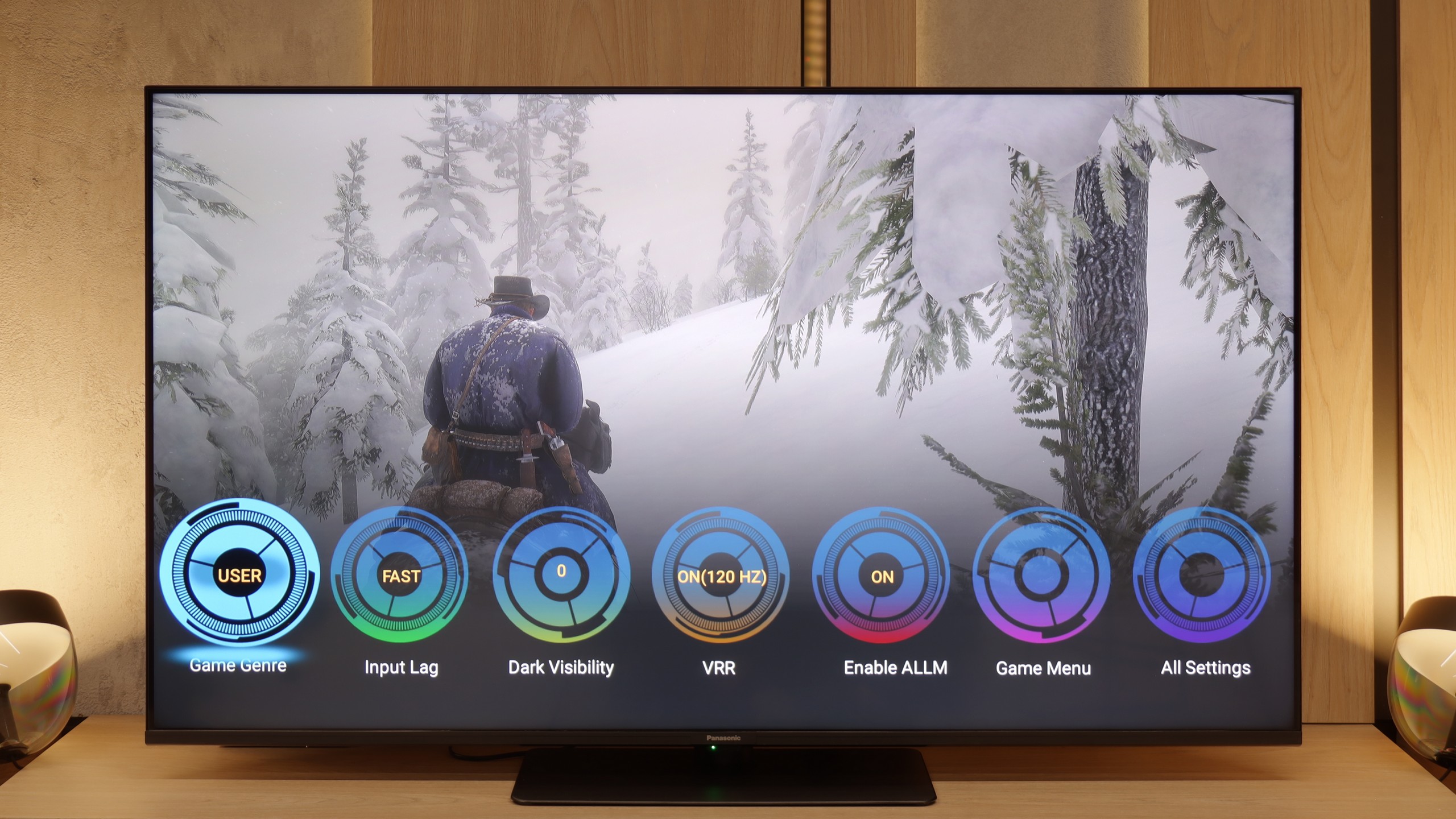
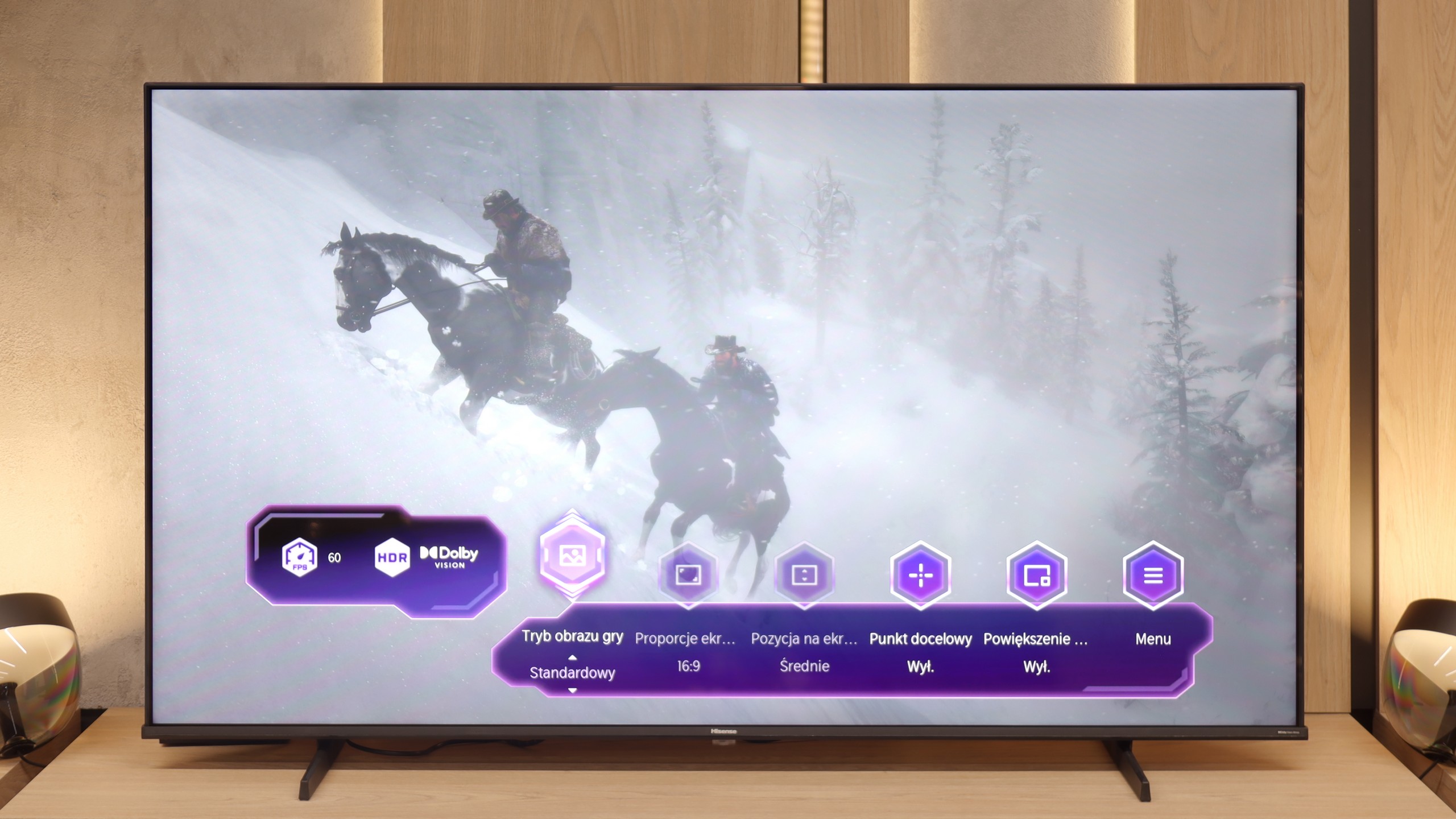
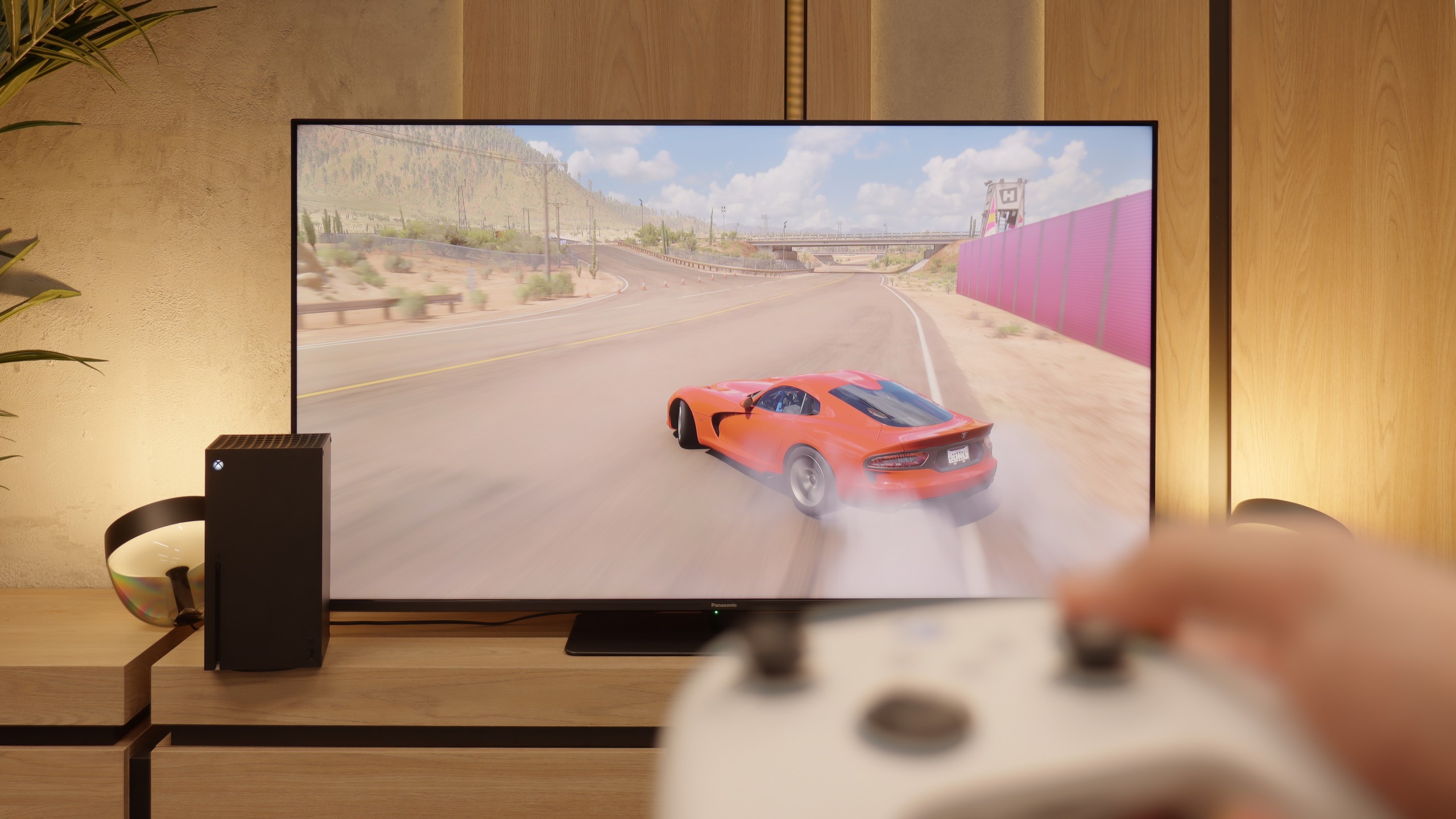
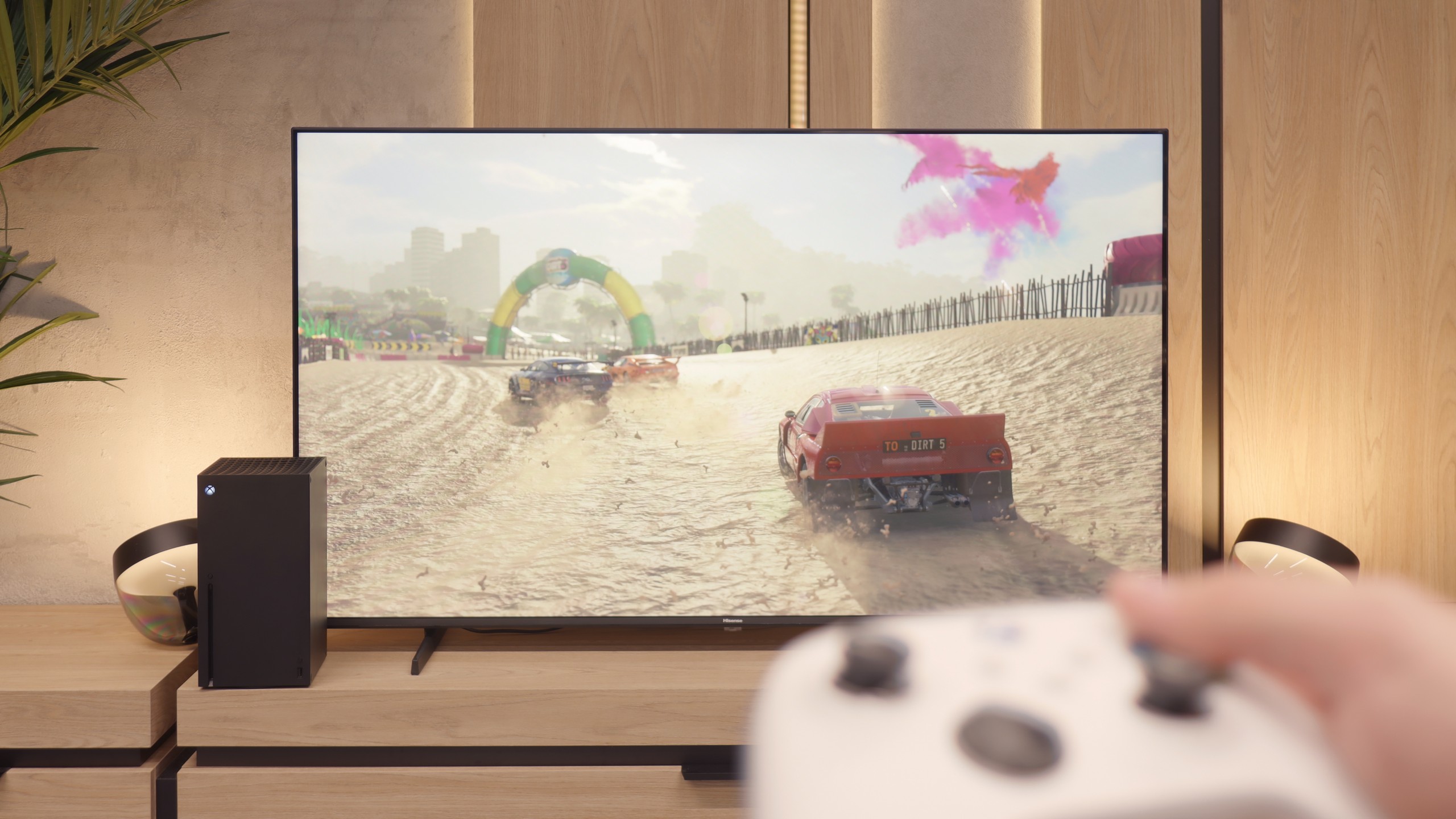
On paper, the Panasonic W85B looks really solid. It has two full HDMI 2.1 ports, support for ALLM, variable refresh rates, Dolby Vision in games, and of course, a high refresh rate of the panel itself. Additionally, it features Panasonic's characteristic game tools bar – a "game bar" that allows you to preview key parameters and quickly change them if needed with a single click. This sounds great, but the problem arises when we turn on HDR. Here, the W85B suffers significantly, as there is practically no HGiG implementation – the television poorly manages brightness, and instead of an accurate picture, we get scenes that are too bright, sometimes even blown out. The solution? The simplest one – turn off HDR in the console settings and leave everything in SDR. And this is where it gets really interesting, as in this scenario, the W85B shows its better side. Low input lag, high fluidity thanks to 120 Hz – all of this makes gaming look phenomenal. Indeed, HDR can be forgone, but if the priority is responsiveness and smooth gameplay, the W85B offers a lot of fun.
Hisense E7Q / E79Q is truly a successful television for gamers, even though it does not support 4K signal at 120 Hz. The manufacturer, however, has ensured a set of features that until recently could only be found in more expensive models. There is ALLM, meaning automatic switching to low latency mode, allowing the television to activate game mode with very low input lag by itself. We also have VRR, functioning up to 60 Hz – while this may not look impressive on paper, in practice it is fully sufficient, as most games on consoles do not exceed this limit. All these settings can be quickly found in the Game Bar panel, a convenient menu created specifically for gamers. From this interface, one can change picture modes, enable a frame counter, or even... an on-screen reticle – humorously named "target point" in the Vidaa system, which is a result of awkward translation from the Chinese manufacturer.
Special praise should be given to the ability to play in 1080p at 120 Hz, which significantly improves the fluidity and responsiveness of the image. Therefore, if someone wants to play a few titles at a higher refresh rate, they can simply lower the resolution and enjoy much smoother motion. Despite the lack of 4K@120Hz, the Hisense E7Q / E79Q performs really well as a gaming television – especially for those who are not looking for perfection but rather a solid and fast screen for everyday gaming.
Input lag
9.8/10
10/10
SDR
HDR
Dolby Vision
There is really nothing to worry about here. The Panasonic W85B responds instantly to our movements, and the values measured in tests can comfortably compete with monitors for gamers. At a 120 Hz signal, the input lag is around 8–10 ms, while at 60 Hz it hovers around 17–20 ms. In practice, this means one thing – no delays, no frustration! You press the button, and the action happens on the screen straight away.
In games, the easiest thing to notice is how fast (or slow) the television is – and the Hisense E7Q / E79Q passes this test without a hitch. After just a few minutes of playing, you can feel that the response to the controller movements is instantaneous, without that characteristic delay that can ruin even the best match in FIFA or a crucial exchange in a fighting game. In game mode, the E7Q / E79Q operates with a delay of less than 15 ms, which means there is virtually no gap between pressing the button and the response on the screen. This is a level that more expensive models would be proud of. And it is precisely for this responsiveness – perhaps even more than for the picture or features – that this television truly deserves to be praised.
Compatibility with PC
8.6/10
3/10
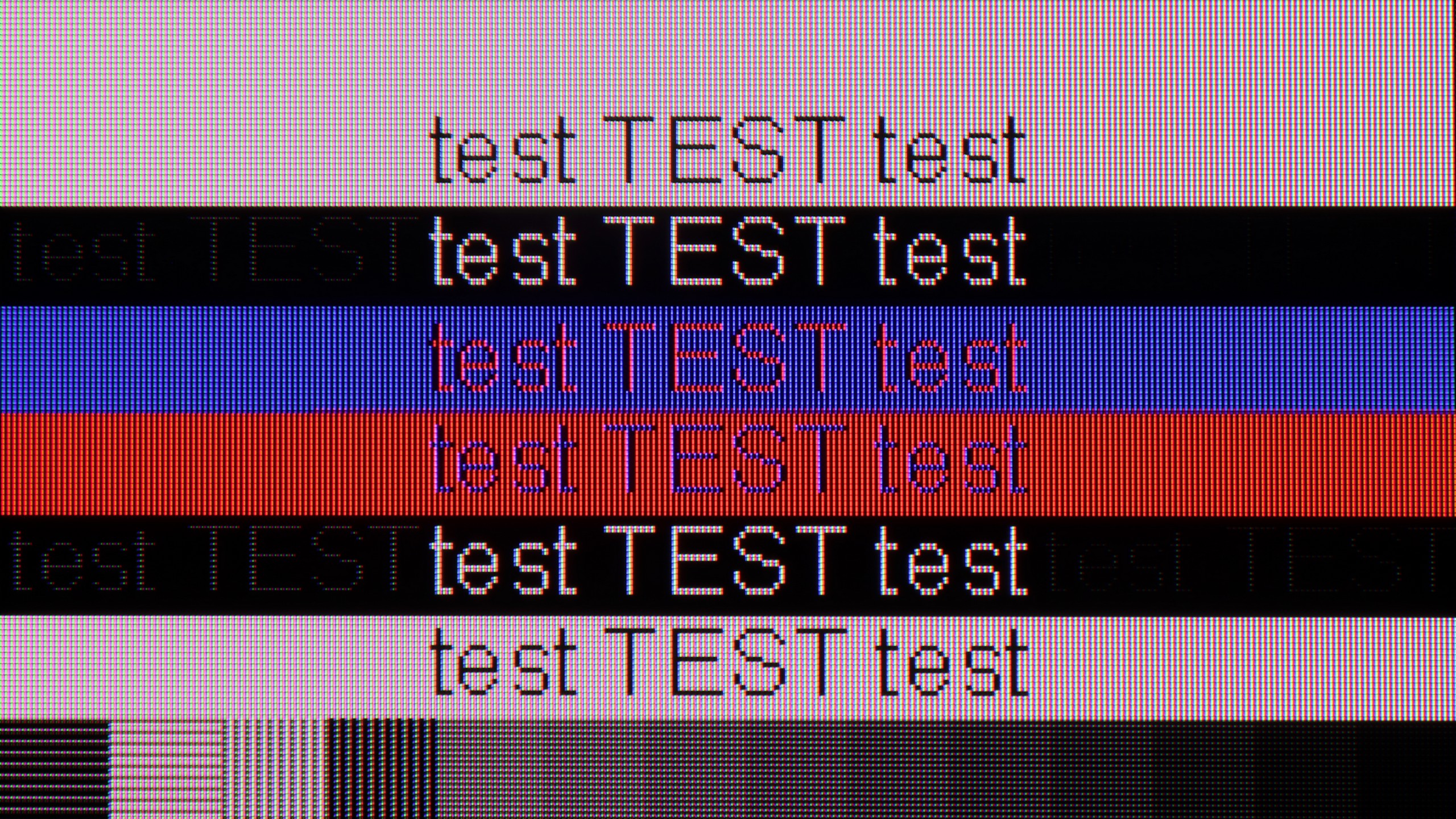
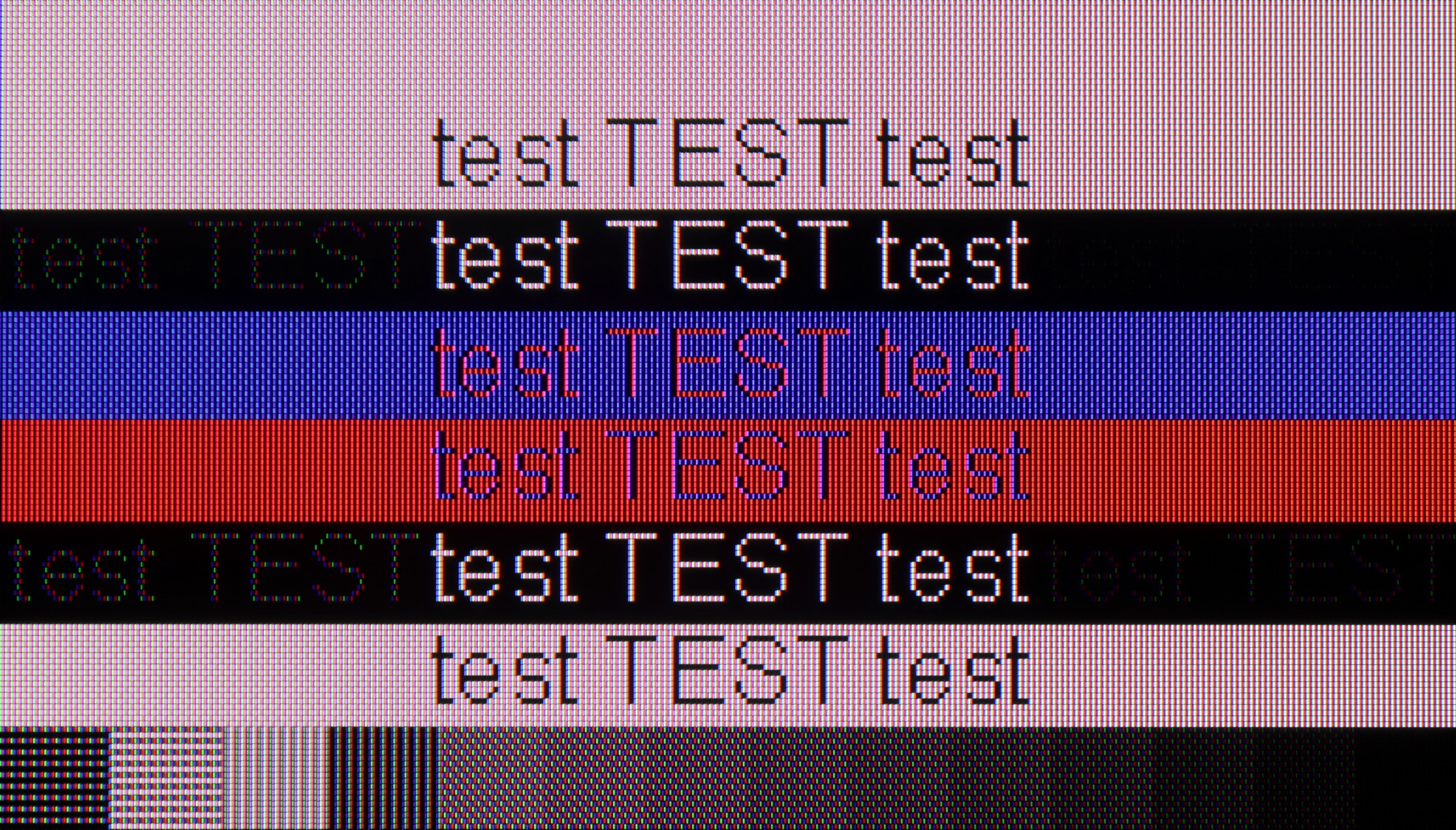
The Panasonic W85B performs surprisingly well as a computer monitor. It is perfectly suited for office work – the fonts are sharp and very readable thanks to full chroma 4:4:4 support, so you can easily write, browse pages, or work on spreadsheets. But the real fun begins when gaming. The television handles refresh rates of up to 144 Hz for PC without any issues, and it also supports popular image synchronisation technologies such as NVIDIA G-Sync and AMD FreeSync. This means we don't have to worry about screen tearing or stuttering – gameplay is smooth and looks simply fantastic.
When it comes to working with a PC, the Hisense E7Q / E79Q unfortunately does not impress. Yes, the television supports full 4:4:4 chroma sampling, so text and fonts are quite readable, but that is where the list of advantages pretty much ends. The screen has a significant issue with dithering, which in practice looks very unpleasant – as if the surface of the image subtly shimmered with colours. This is best seen with dark letters on a grey background – instead of neutral shades of fonts, there are delicate flashes of blue, green, and red, reminiscent of a rainbow effect. After extended use with a computer, this can strain the eyes and reduce comfort. On the plus side, one can note the presence of frame synchronization and the ability to operate at 120 Hz at a lower resolution, which may be a small consolation for gamers. However, as a typical monitor for PC use, the E7Q / E79Q performs rather mediocrely.
Viewing angles
3.2/10
3.2/10
Here you can see the biggest price we pay for the high quality of the VA matrix contrast. The W85B, like most televisions with this type of panel, does not perform very well when viewed from a wider angle. Colours lose intensity and the image begins to fade as soon as we move away from the screen's axis. This is not a flaw of Panasonic itself, but rather a characteristic of VA technology – excellent contrast in exchange for poorer viewing angles. So if you plan to watch films with a larger group and often sit "off to the side," you need to keep this in mind.
The Hisense E7Q / E79Q has typical VA panel weak viewing angles. Straight on, the image looks very good - the blacks are deep and the contrast is high. However, it only takes sitting slightly off to the side for the situation to change rapidly. At an angle of about 45 degrees, brightness drops by around 73%, and colours clearly lose saturation. This is the typical compromise we will have to accept for choosing a television with this type of panel instead of an IPS panel. With IPS, the viewing angles are much better, but the blacks are considerably worse.
Daytime performance
4.2/10
5.2/10
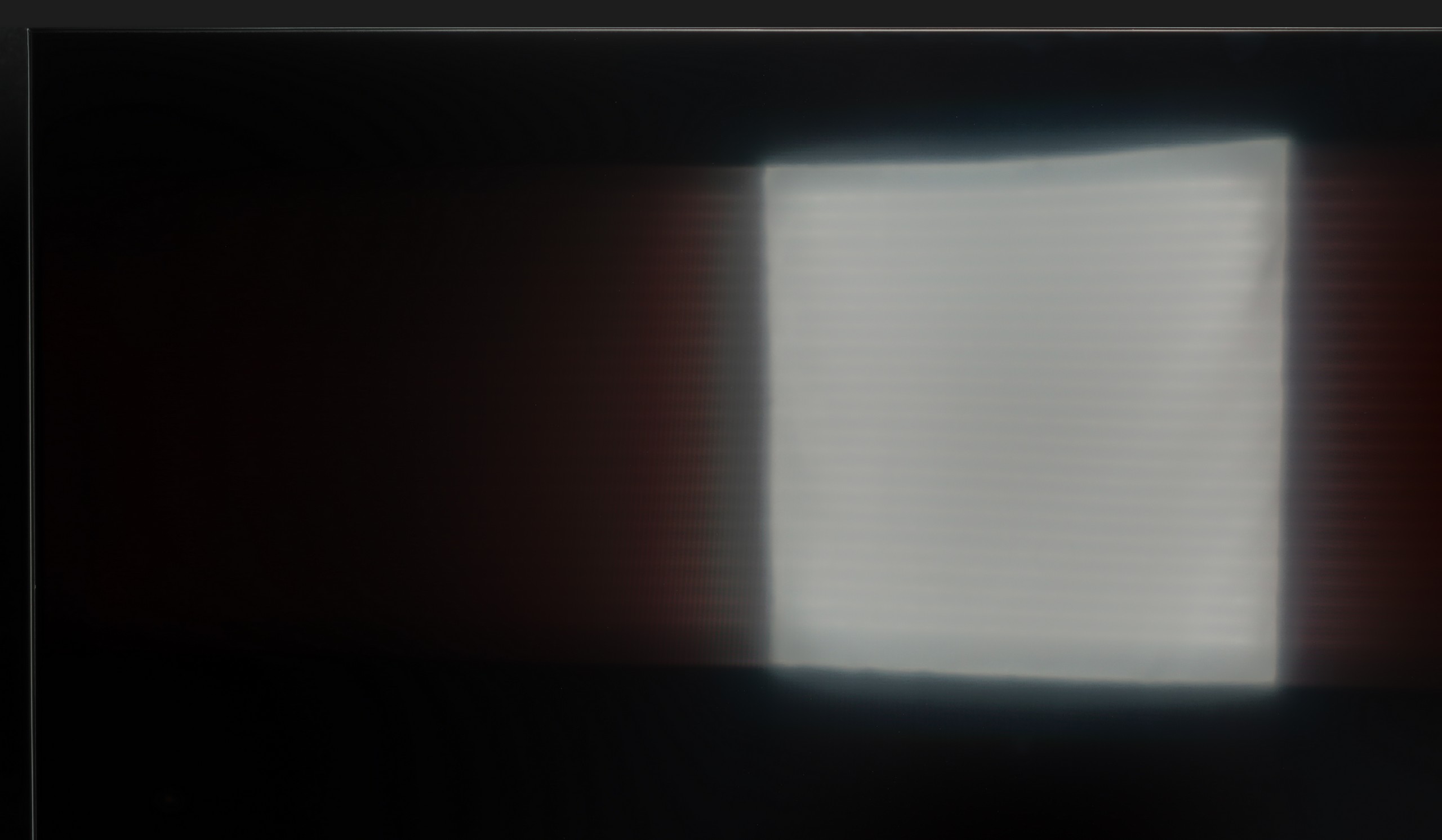
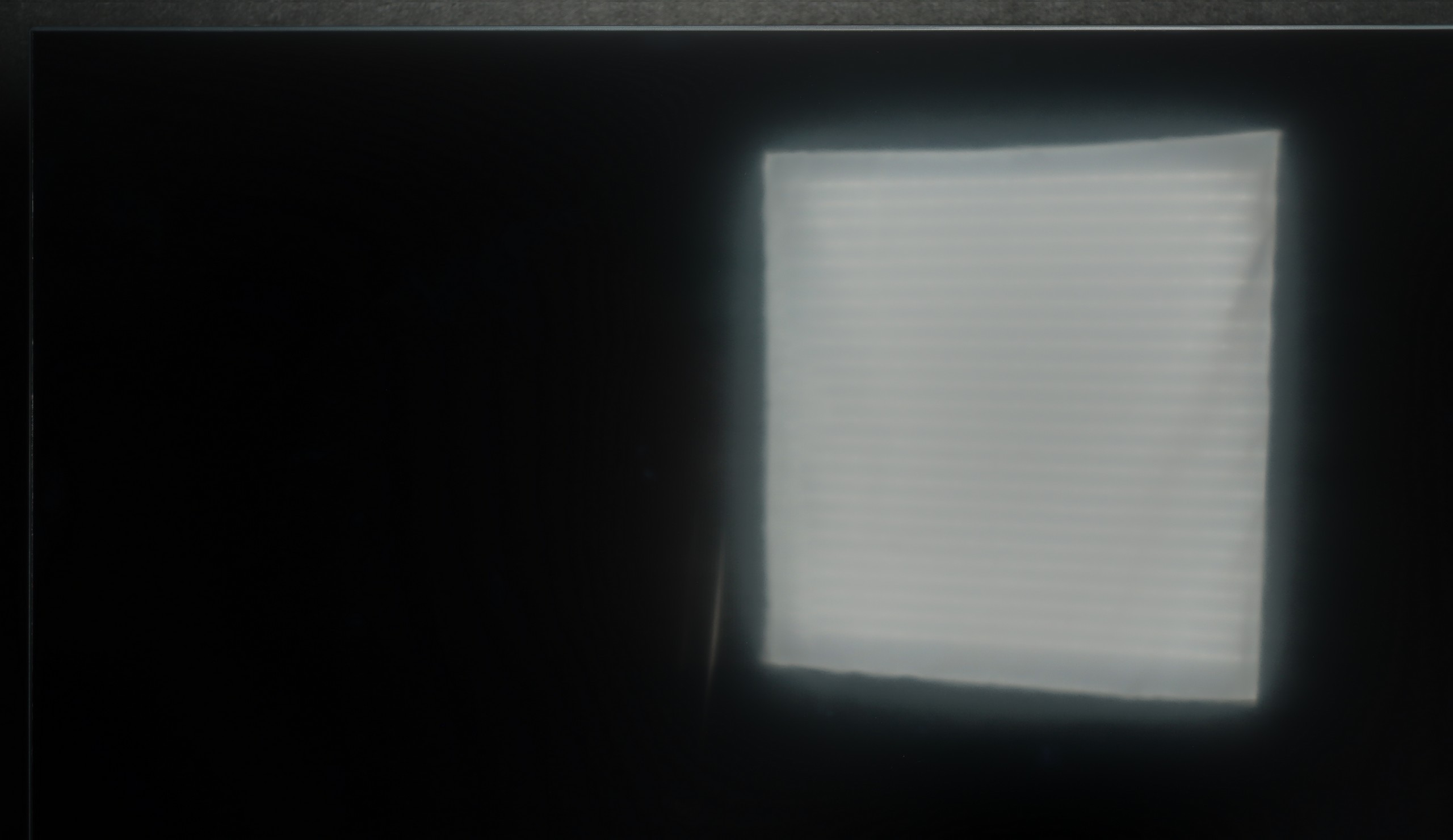


Panel brightness
Average luminance SDR
Hisense E7Q / E79Q: 371 cd/m2
Panasonic W85: 263 cd/m2
The Panasonic W85B features a satin-finish panel that performs quite well in reducing reflections and maintaining colours even under strong light from windows or lamps. There is no "mirror" effect here, so watching television in a typical living room during the day is comfortable. However, the problem arises in really bright rooms – the television does not have high brightness, so it cannot compete with very strong sunlight. It is simply a screen that performs best in controlled conditions.
The Hisense E7Q / E79Q performs best in moderately bright living rooms. Its brightness ranges from 350 to 380 nits, so in typical home conditions, the picture looks good, but in very sunlit rooms, it begins to lose clarity. This is simply not a screen for interiors with large windows or strong daylight. On the plus side, it is worth mentioning the satin coating of the panel, which quite effectively suppresses reflections – both from lamps and from windows. Thanks to this, even if the room is not in dim lighting, the image still remains fairly readable.
Panel details
Subpixel Structure:
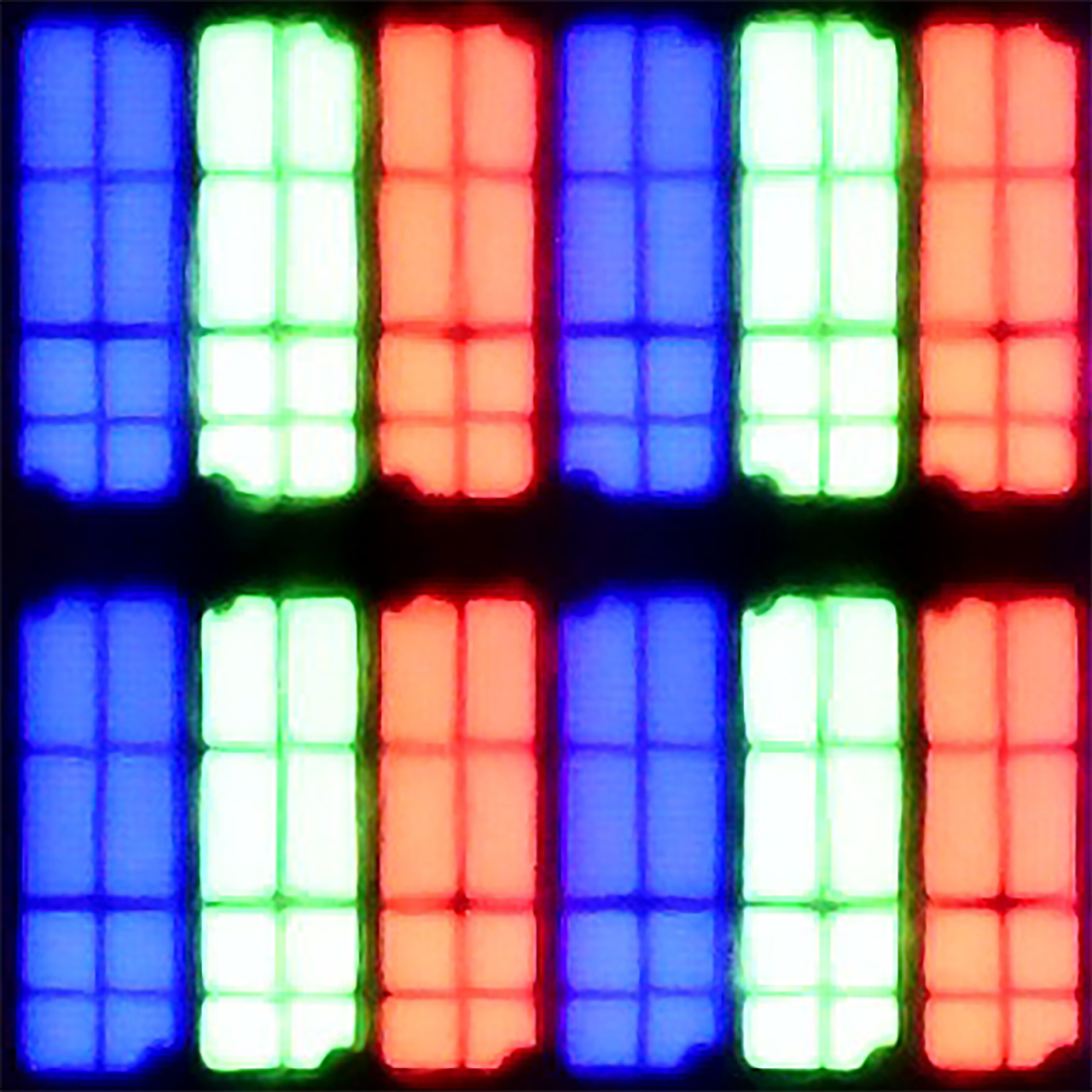
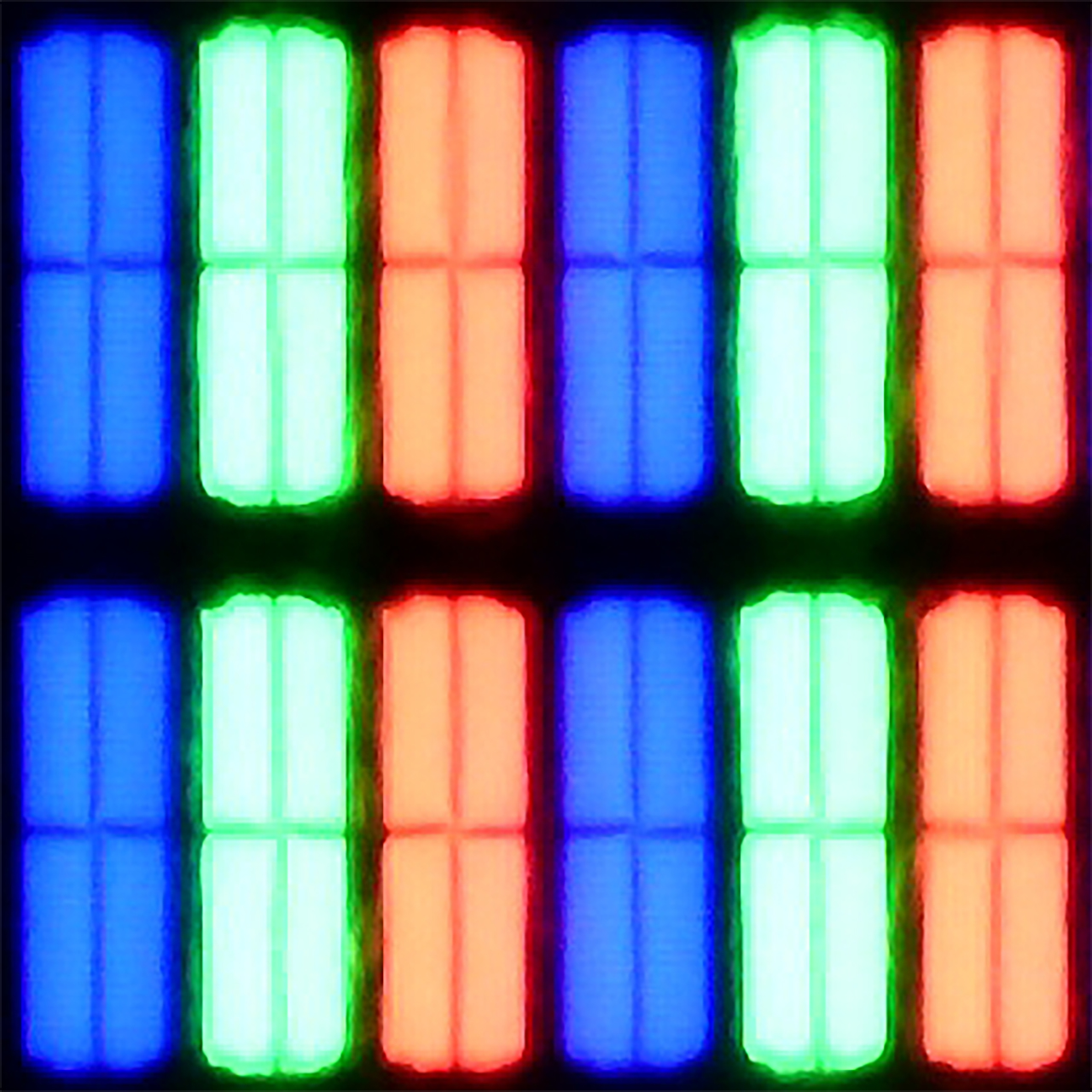
Panel uniformity and thermal imaging:
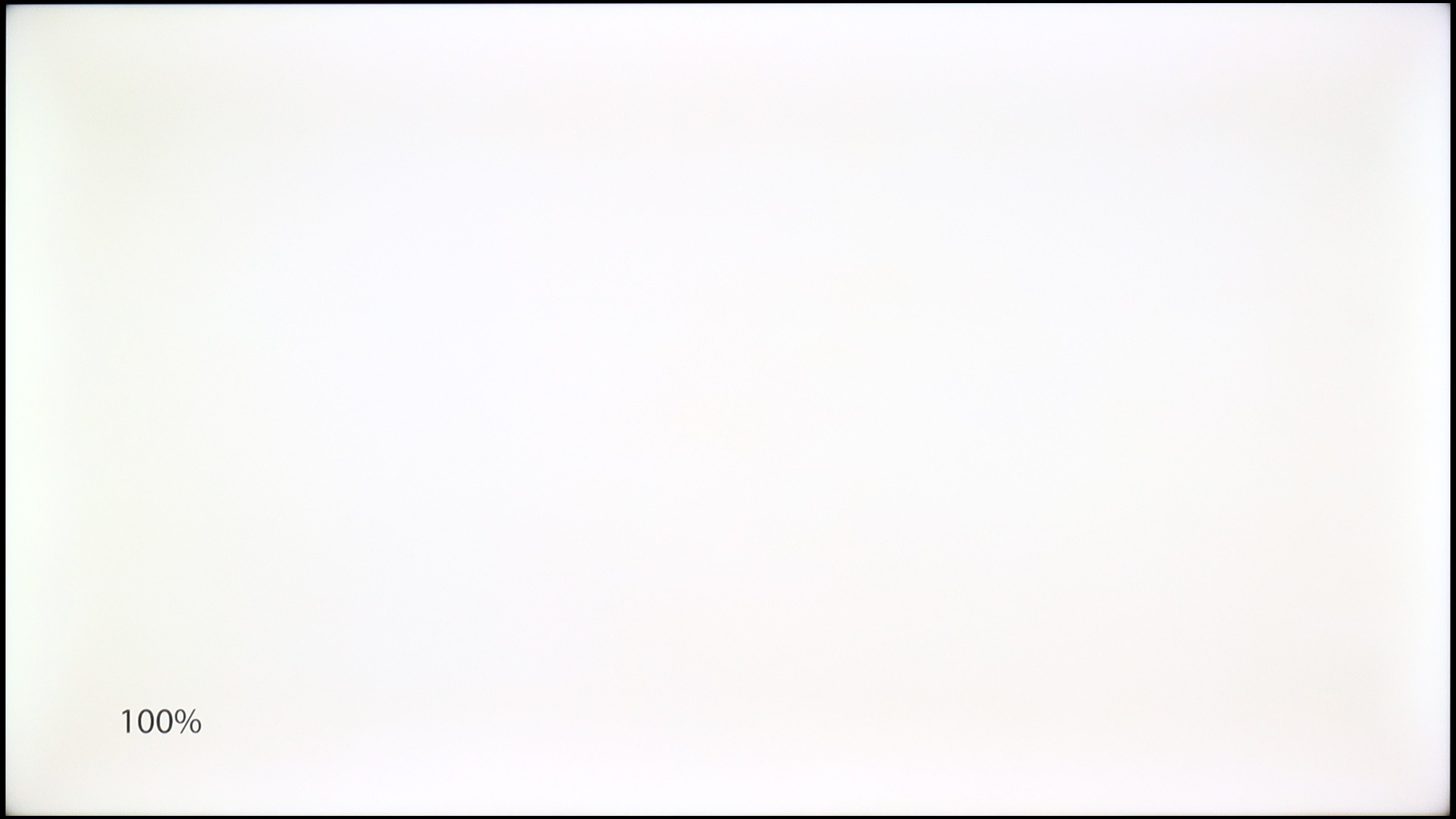

Panasonic W85
Hisense E7Q / E79Q
TV features
6.8/10
8.7/10
- HDMI inputs1 x HDMI 2.0, 2 x HDMI 2.1 48Gbps3 x HDMI 2.0, 0 x HDMI 2.1
- Other inputsComponent (YPbPr)
- OutputsToslink (Optical audio), eARC (HDMI), ARC (HDMI), Mini-Jack (Headphones)Toslink (Optical audio), eARC (HDMI), ARC (HDMI), Mini-Jack (Headphones)
- Network InterfacesWi-Fi 2.4GHz, Wi-Fi 5GHz, Ethernet (LAN) 100MbpsWi-Fi 2.4GHz, Wi-Fi 5GHz, Ethernet (LAN) 100Mbps
- TV receptionDVB-T, DVB-T2, DVB-S, DVB-S2DVB-T, DVB-T2, DVB-S, DVB-S2, DVB-C
Classic features:
- Recording to USB (terrestrial TV)
- Recording programming
- Picture in Picture (PiP)
- RF remote control (no need to aim at the screen)
- Backlit remote control
- Teletext
- Audio only mode
- Bluetooth headphones support
- Simultaneous Bluetooth headphones & TV audio
Smart features:
- AirPlay
- Screen mirroring (Windows Miracast)
- Voice search
- Voice search in native language
- Ability to connect a keyboard and mouse
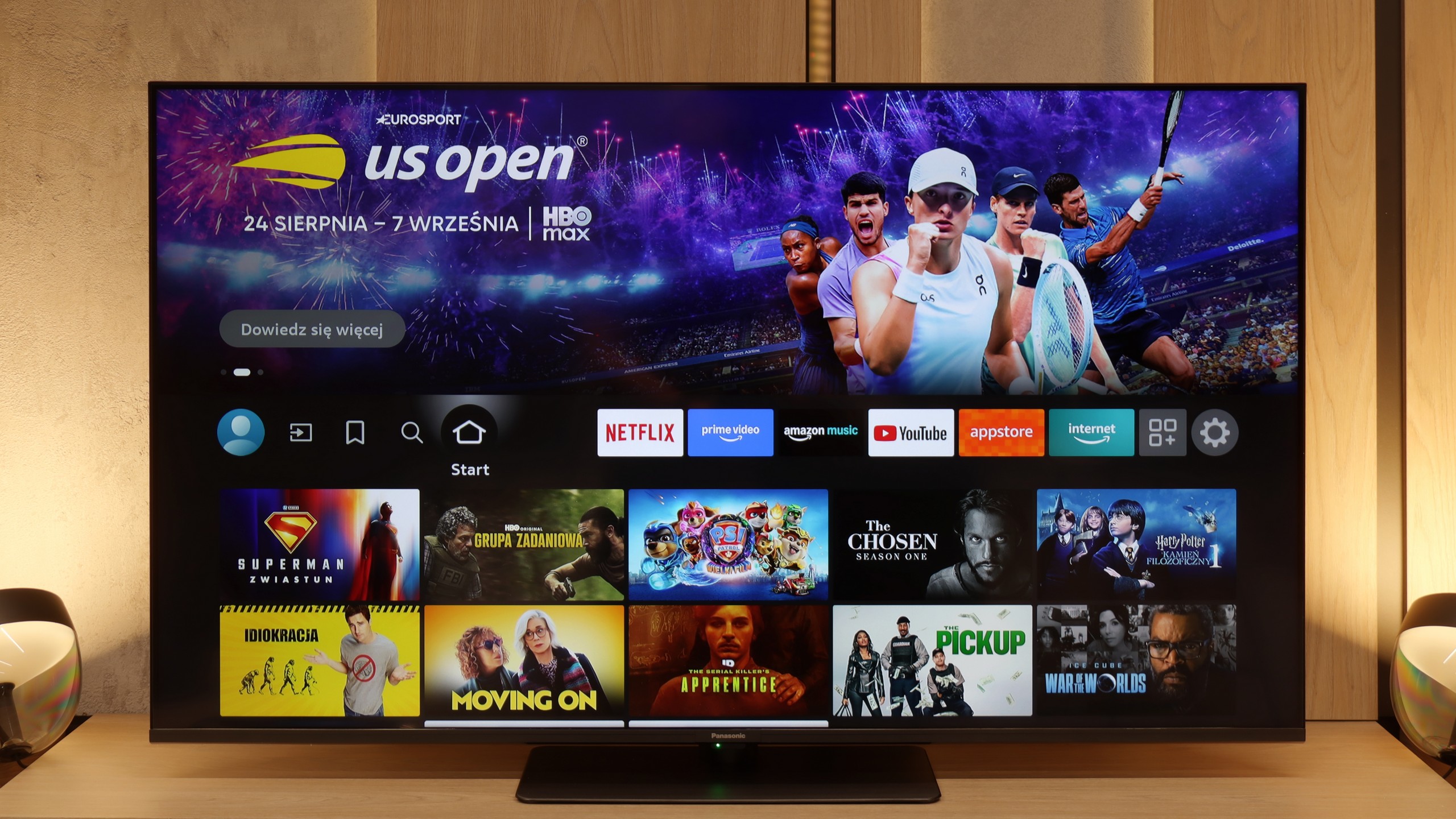
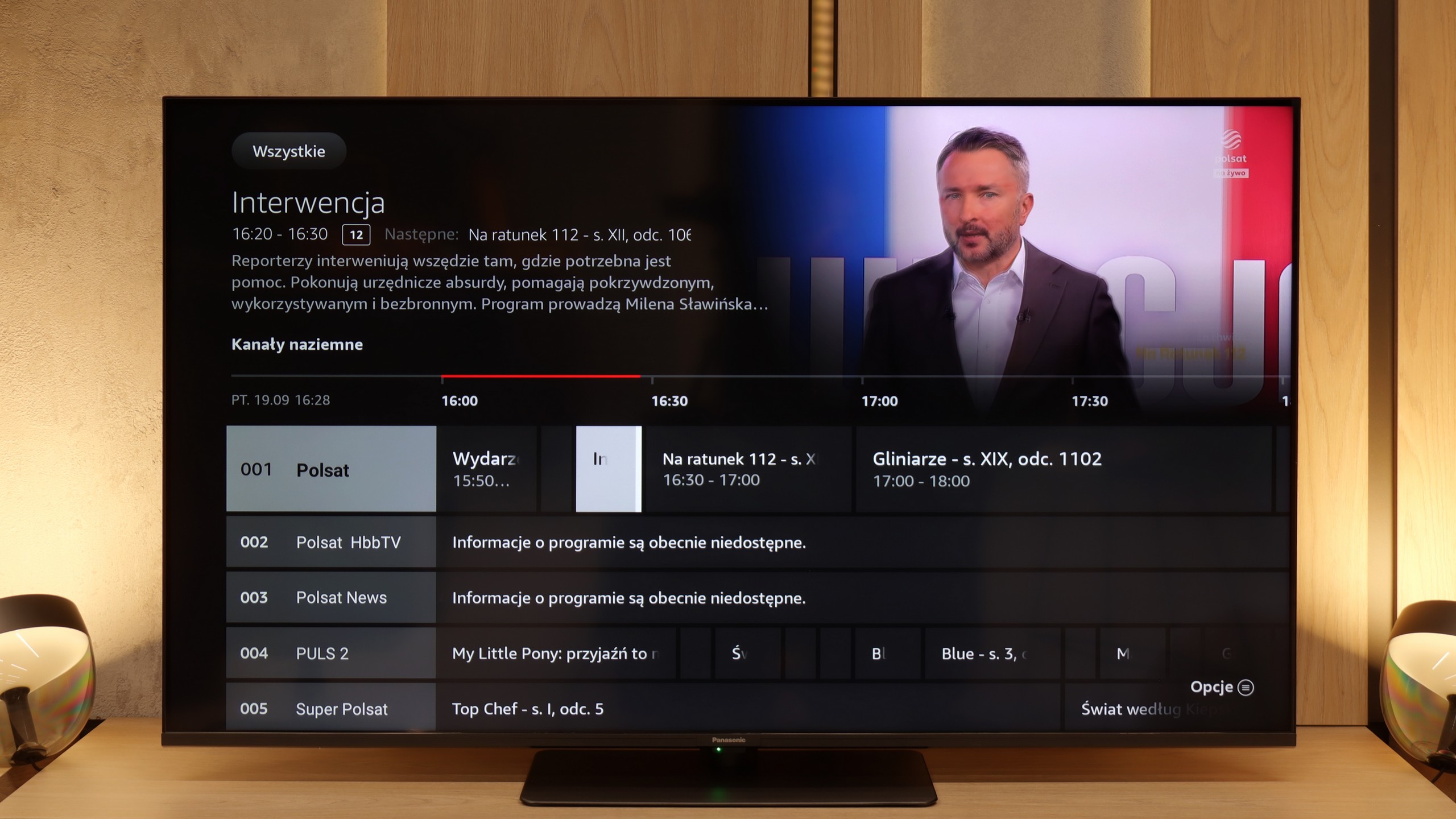
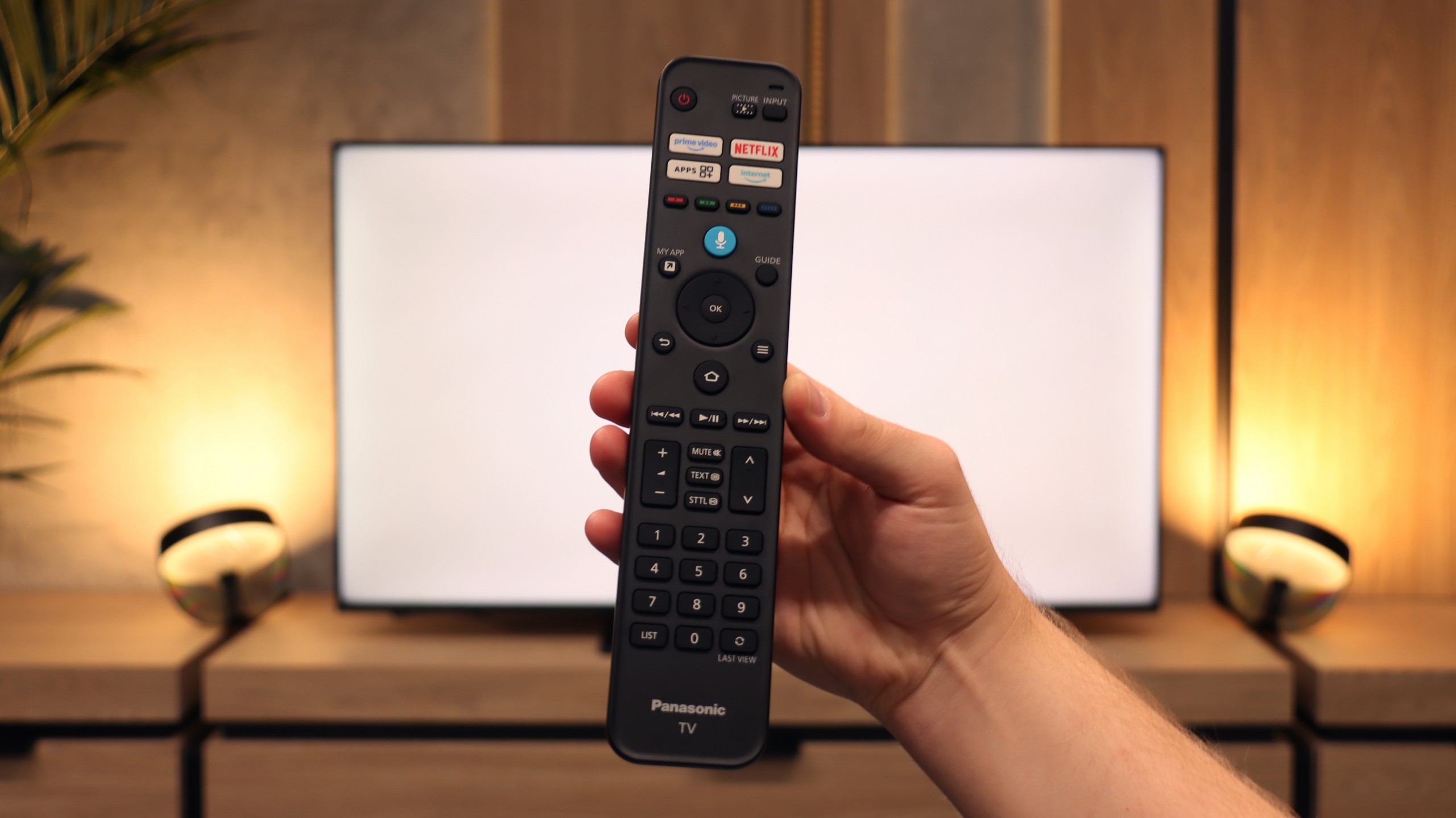
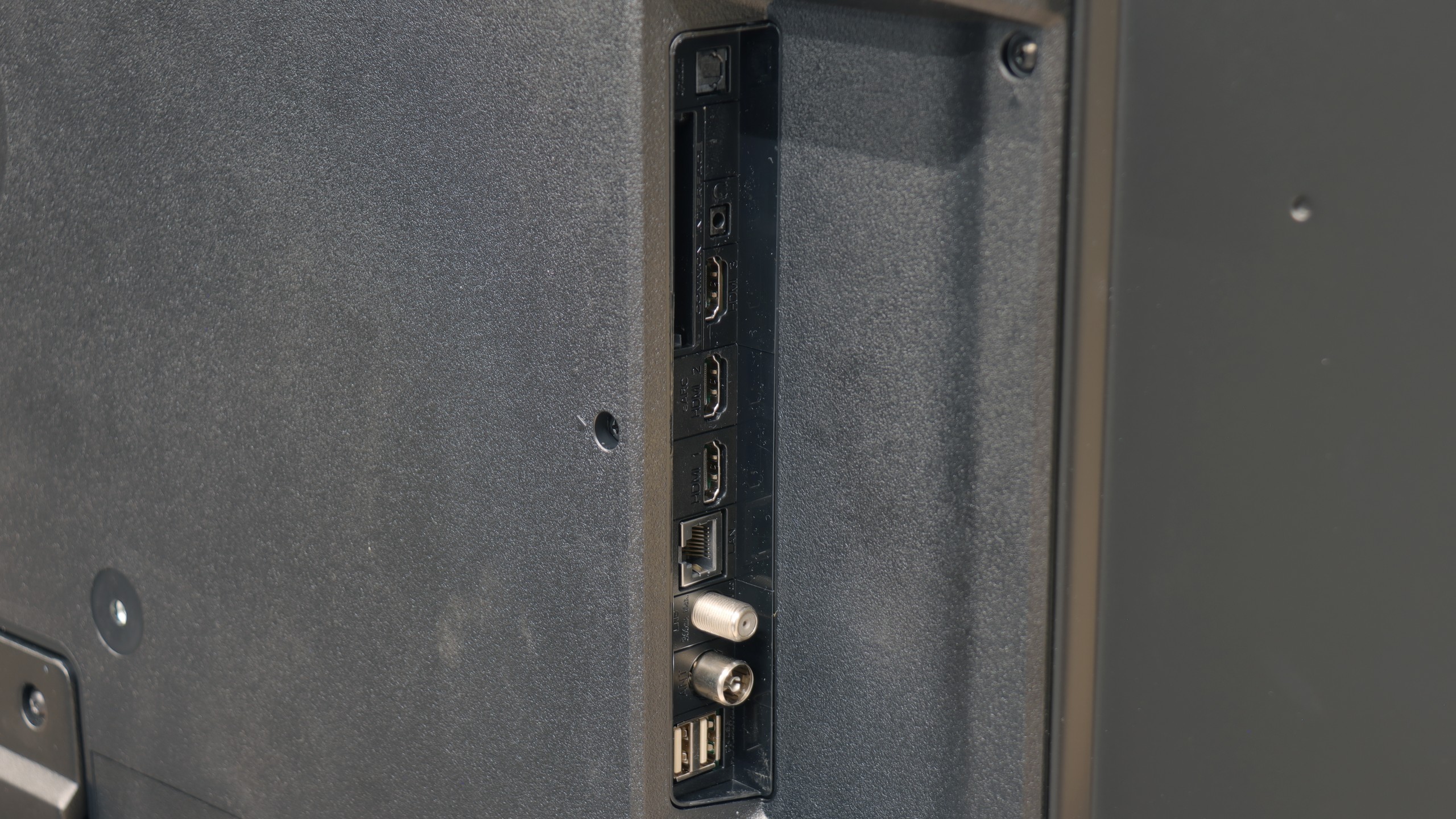
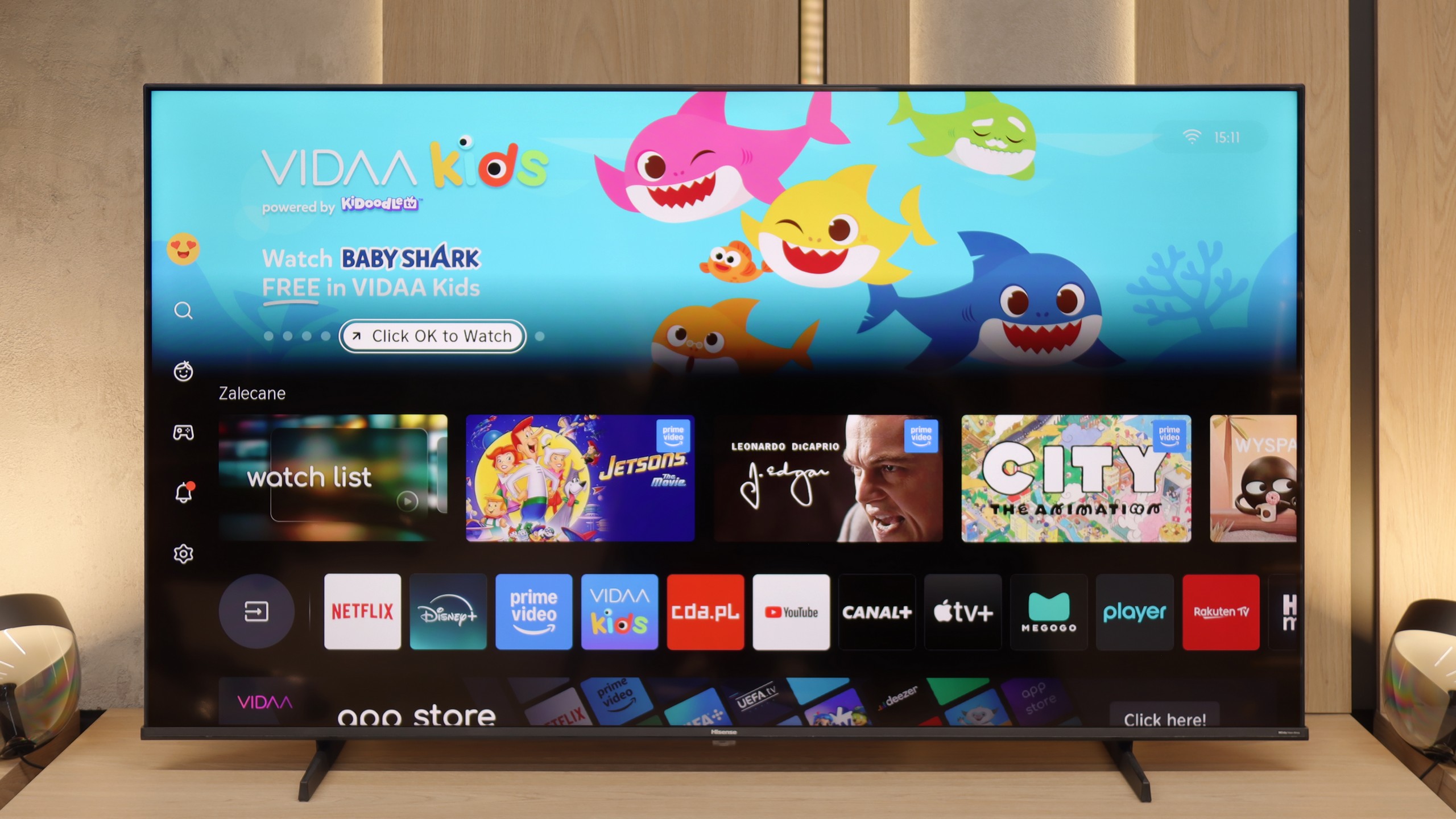
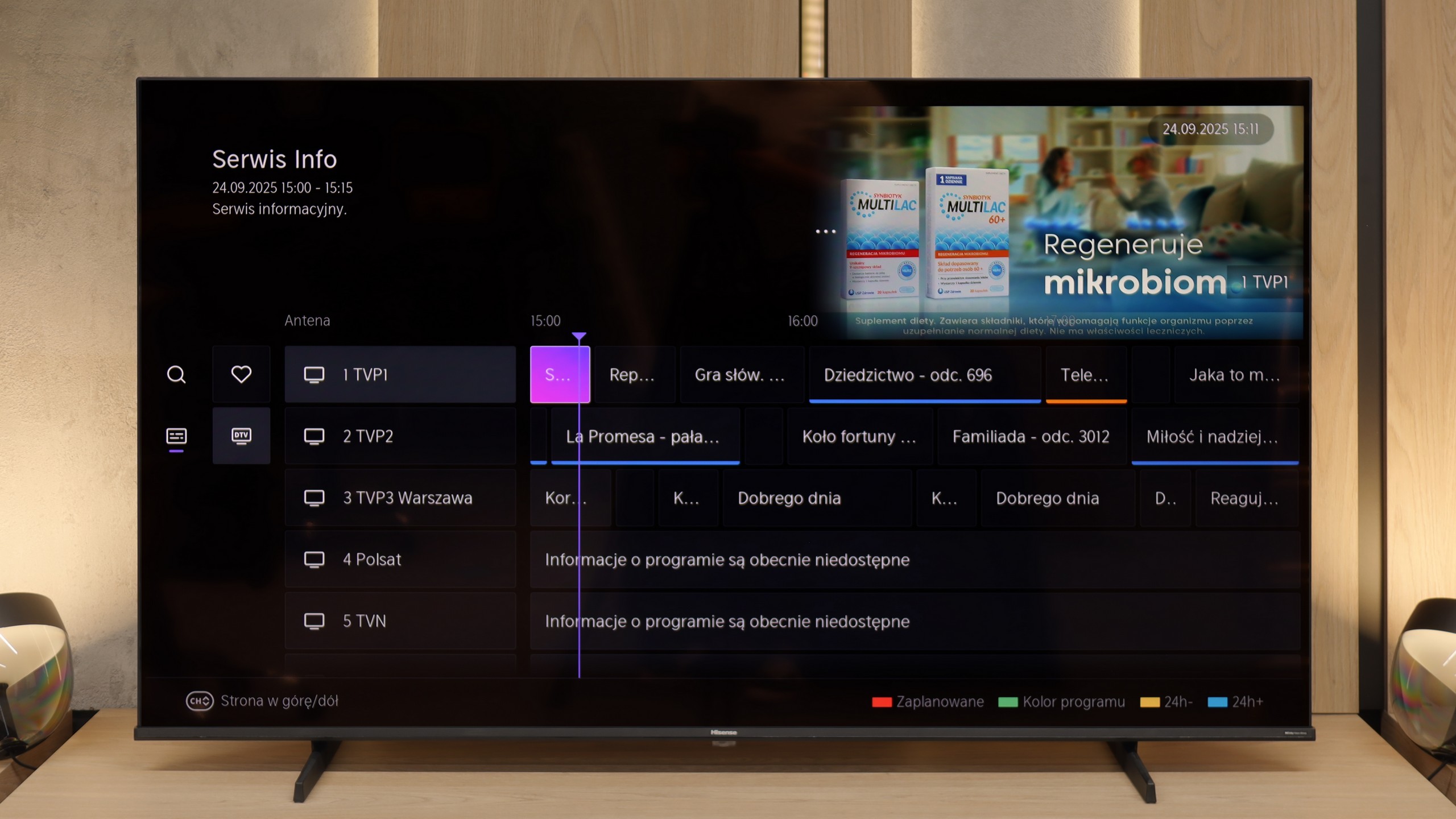
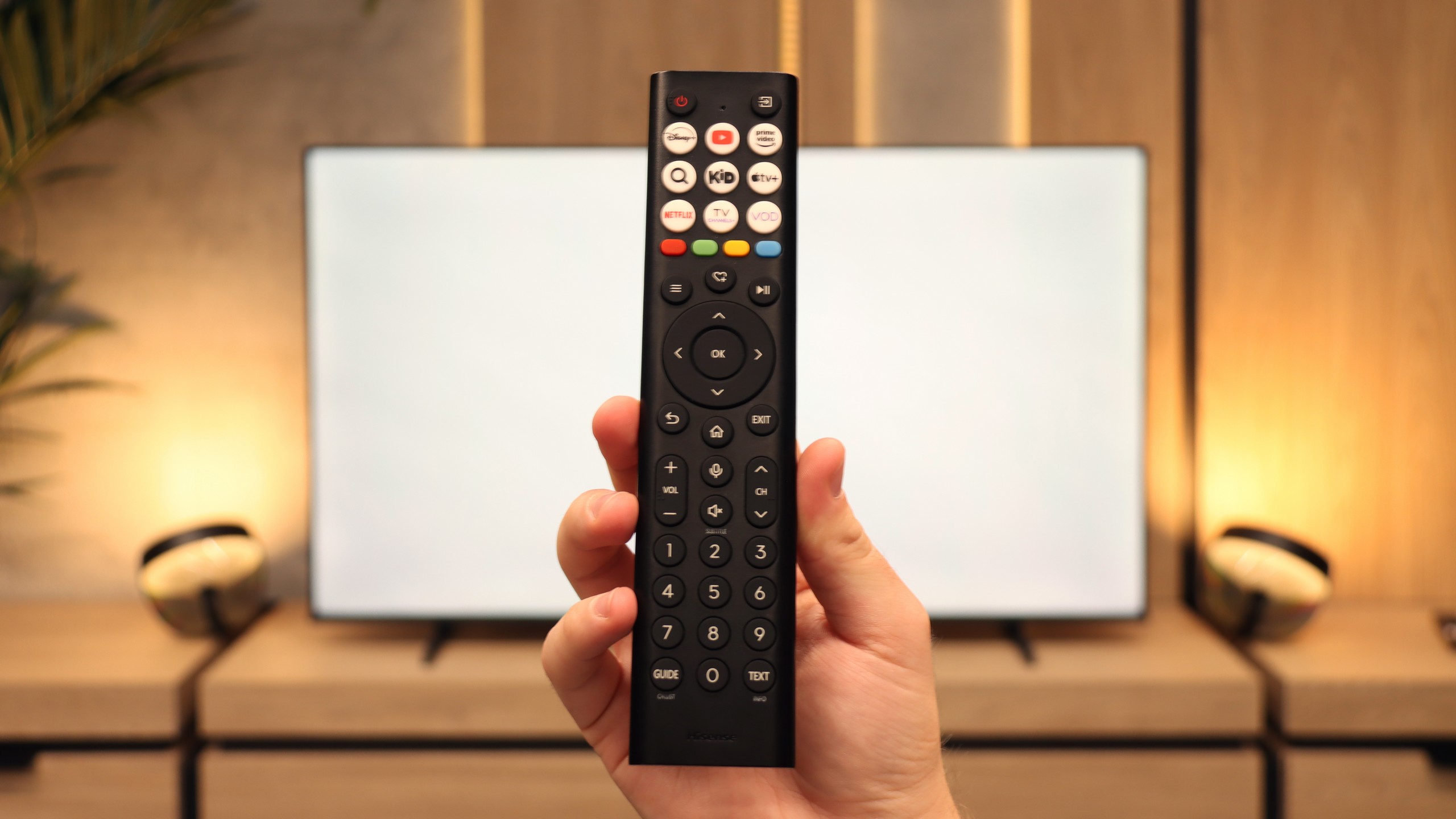
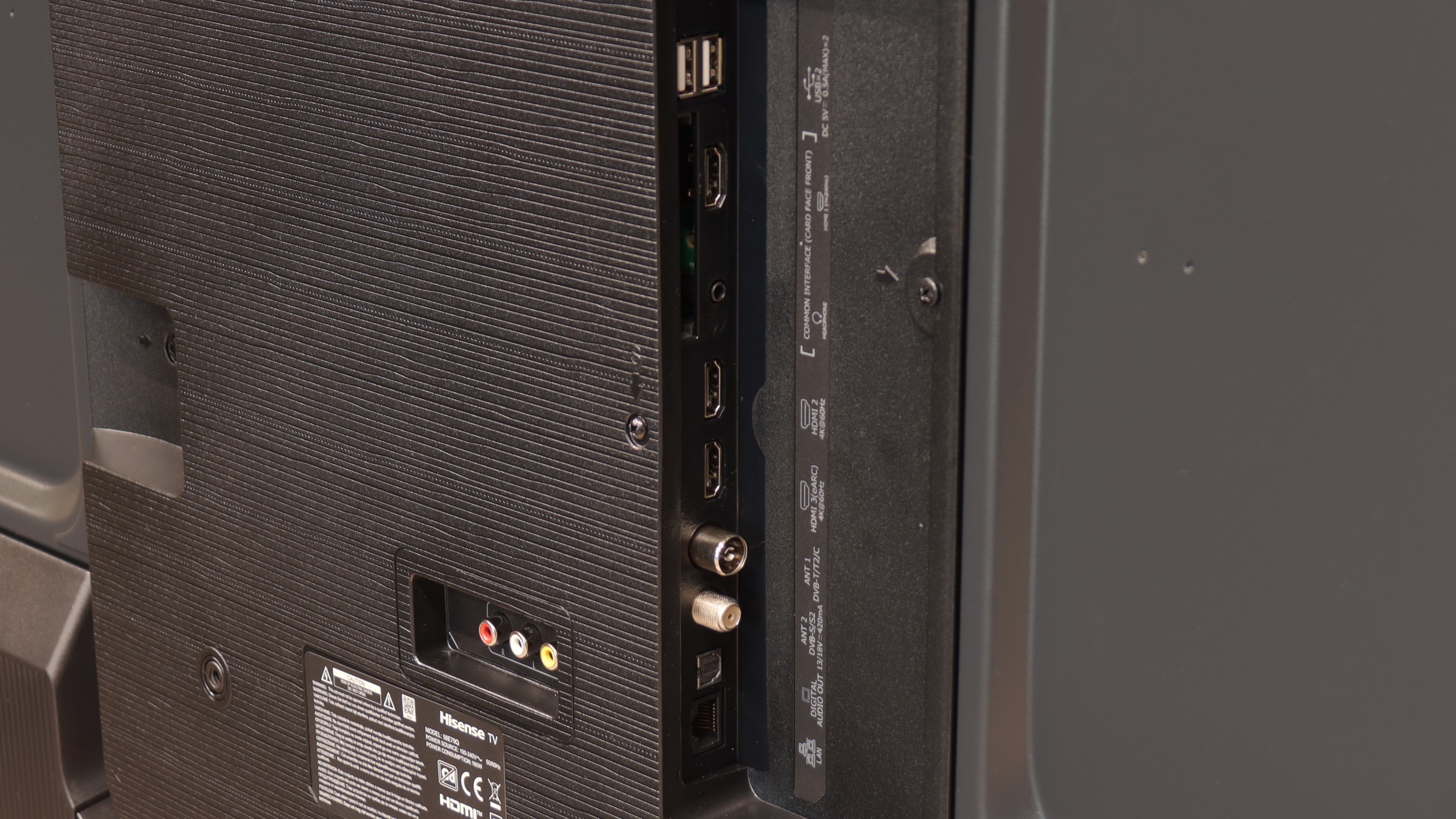
SmartTV: FireTV
The W85B runs on the Fire TV system, and it must be said – it is a significant step forward compared to Panasonic's previous proprietary solutions. Here, we have support for AirPlay, screen mirroring, and even voice control through Alexa. It sounds modern, and in practice, it does provide a lot of capabilities. The problem is that in Europe, Fire TV still looks a bit like a “guest with luggage.” It works decently, but there are occasional micro-hiccups, the interface doesn't always respond as smoothly as we would like, and in the menu, one can encounter awkward translations. This is not yet at the level of the big players like Google TV or even Tizen, but it is still an improvement compared to what Panasonic had previously. The worst part, however, is that the Fire TV application library is quite modest, and this is its biggest drawback.
Classic Television Functions
In terms of typical television functionalities, it is quite good – we have a classic remote control with a full numeric keypad, a clear EPG guide, and the possibility to record programmes from the built-in tuner to an external USB drive (e.g. a flash drive). The downside is the lack of the option to schedule recordings in advance – you can only record “here and now,” but not set recordings for later.
SmartTV Features: Vidaa
When it comes to Smart TV features, the Hisense E7Q / E79Q runs on the VIDAA system, which has been developed by the Chinese manufacturer for several years. It is evident that the software is maturing – it includes AirPlay, Screen Mirroring, and voice search in many languages, including Polish. Unfortunately, in our unit, it operated quite slowly, which surprised us somewhat, as in other Hisense models this system reacted much faster. A downside is the limited application library. Of course, the most important apps are available – Netflix, Disney+, and YouTube – but it's worth checking before purchase if you will find everything you use on a daily basis there.
Classic Features
In terms of traditional television functions, the E7Q performs significantly better. It has practically everything one could expect from a classic television: recording from built-in tuners to USB, a headphone jack output, and even a component input for older audio equipment. Additionally, it offers full audio support via eARC, so you can be assured that regardless of the situation, the soundbar will always "play as it should." The remote is also fairly traditional, well-designed with a large number of buttons (including numerical ones), which may appeal to those who still watch regular television on their TV. 😉
Playing files from USB
3.1/10
8.2/10
Supported photo formats:
Maximum photo resolution:
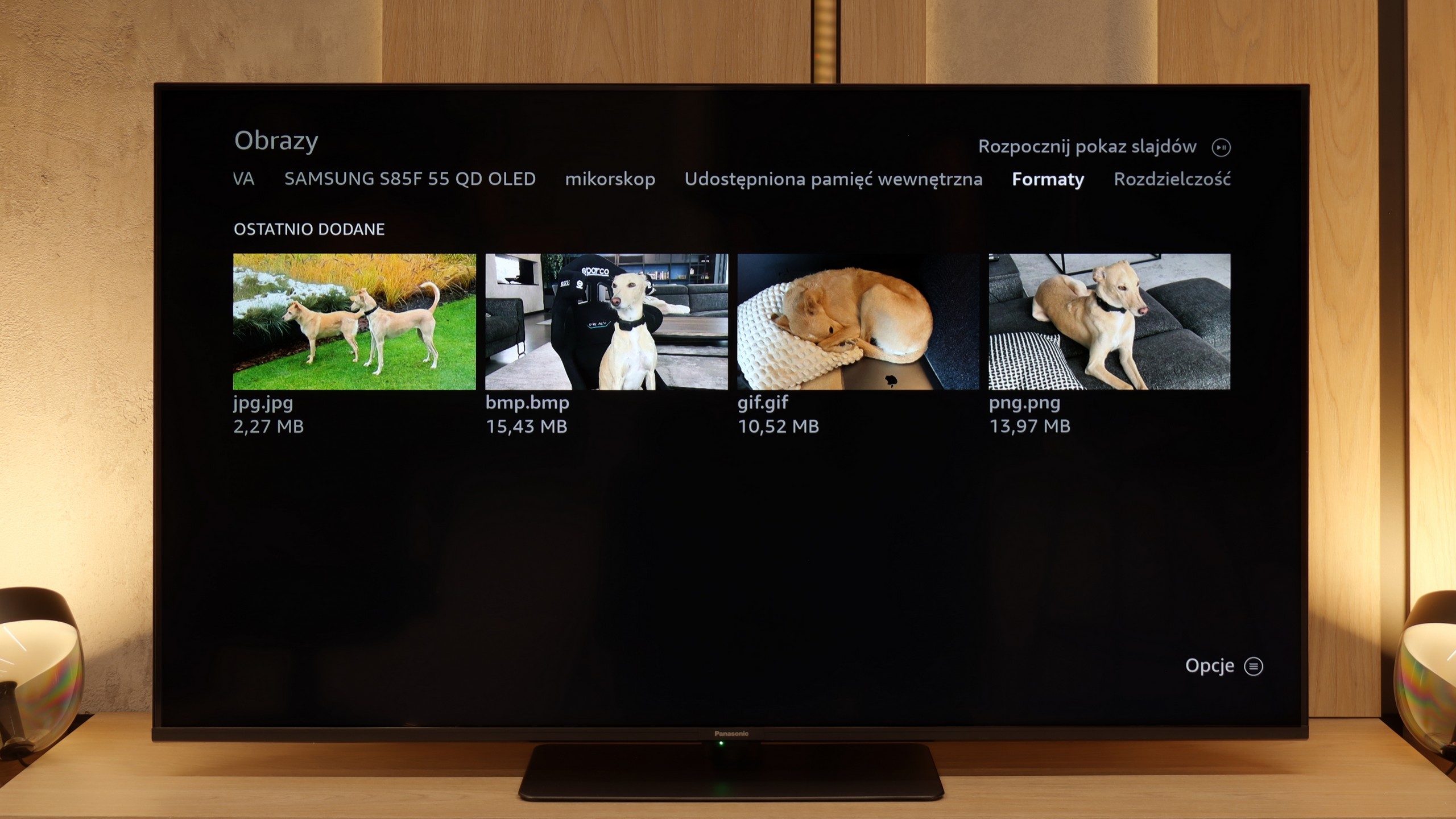
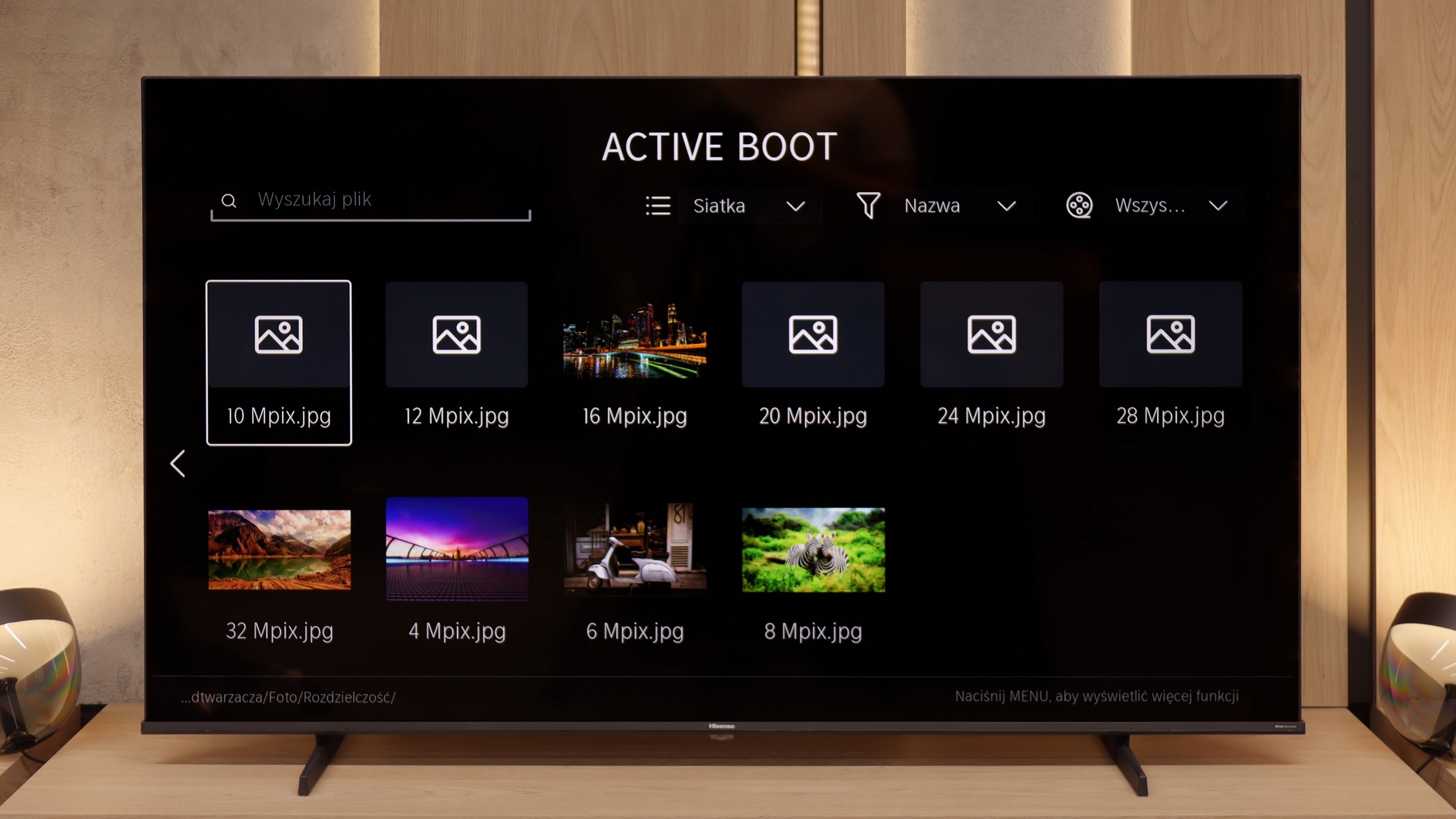
The biggest downside of the built-in player with Fire TV is the lack of support for external text subtitles. If you have your own film library and use text files, you simply won't be able to display them on this television. The player itself handles basic video formats, but if someone wants to fully utilise files from USB, they will likely end up installing an additional application from the store (e.g. VLC).
The media player in the Hisense E7Q / E79Q works properly, but it can be finicky. The biggest problem concerns photo support – the television only handles selected formats, and some files simply do not open. This is quite surprising, as even cheaper models from other manufacturers usually do not have this issue. Videos and music play without major problems; however, one must take into account that the E7Q is not a master of versatility when it comes to files from a pendrive. It is rather a basic player that works – as long as we don't try to 'surprise' it with something.
Apps
7.6/10
7.7/10














































Sound
5.8/10
6.3/10
- Maximum volume87dB83dB
- Dolby Digital Plus 7.1
- Dolby True HD 7.1
- Dolby Atmos in Dolby Digital Plus (JOC)
- Dolby Atmos in Dolby True HD
- DTS:X in DTS-HD MA
- DTS-HD Master Audio
Here, the Panasonic W85B unfortunately has nothing to boast about. The speakers sound flat and rather “plastic”, so there’s definitely no talk of cinema experiences here. There’s no depth, there’s no clear bass – just basic sound that’s merely meant to “exist”. It’s a shame because we thought that the external subwoofer used here would actually make a difference. Unfortunately, we were mistaken. The only advantage is that the television can play really loudly. This may appeal to older users who often need higher volumes to comfortably watch programmes or news. It’s sufficient for everyday TV watching, but if someone is thinking about films and games – an additional soundbar or audio system is practically a must.
The sound in the Hisense E7Q / E79Q is exactly as one might expect from a television in this price range – rather flat, but quite loud. During measurements, the maximum volume reached about 83 dB, so it is more than sufficient for everyday viewing. The dialogues are clearly audible, which somewhat compensates for the lack of pronounced bass and depth. There are no revelations here: it is simply a solid minimum that can be accepted. However, a plus point is the wide support for audio formats. The television handles Dolby TrueHD, Dolby Atmos, and even the increasingly rare DTS:X. That is quite a nice bonus, as at least we can be sure that regardless of the source – everything will sound as it should. (Definitely when we connect it to an external audio source such as a soundbar).
Sound Quality Test
Acoustic Measurements
87dBC (Max)
75dBC
83dBC (Max)
75dBC
